


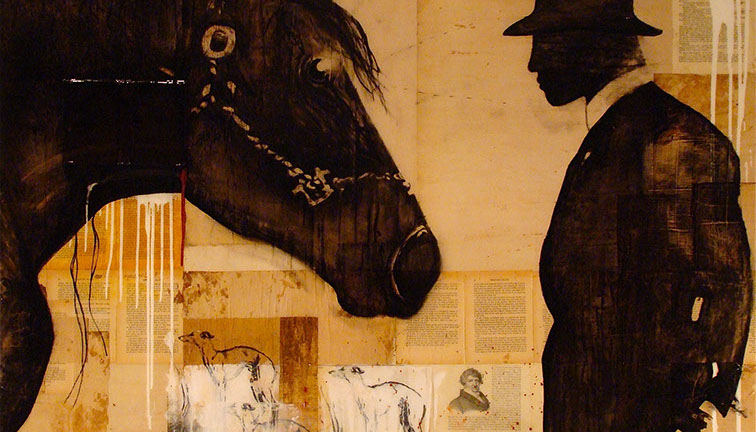
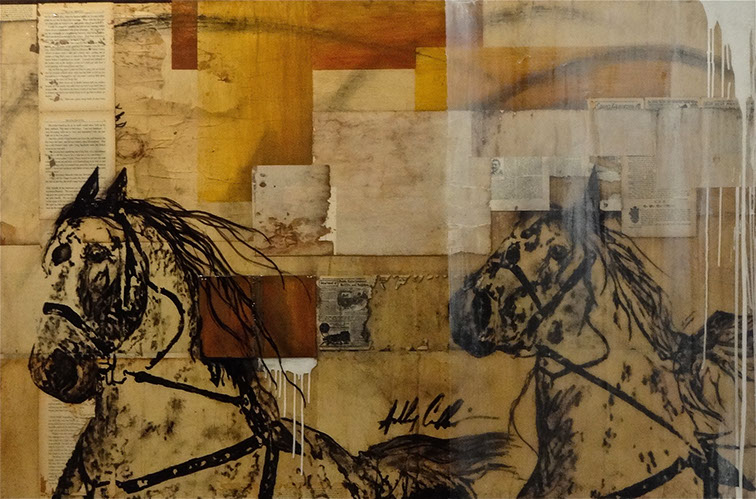
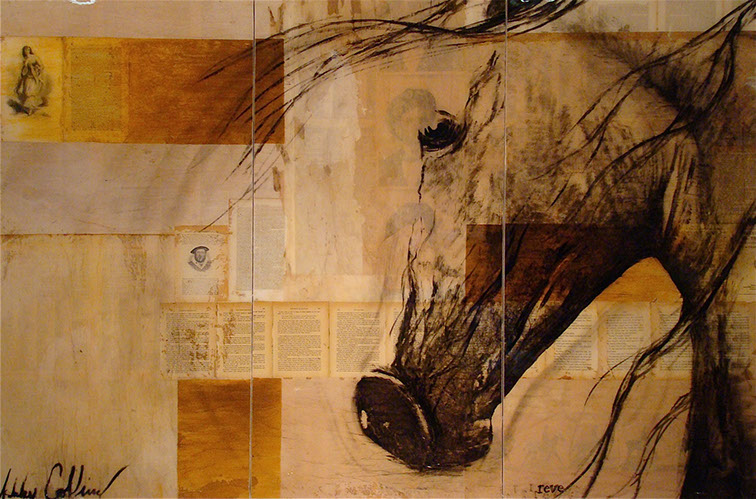

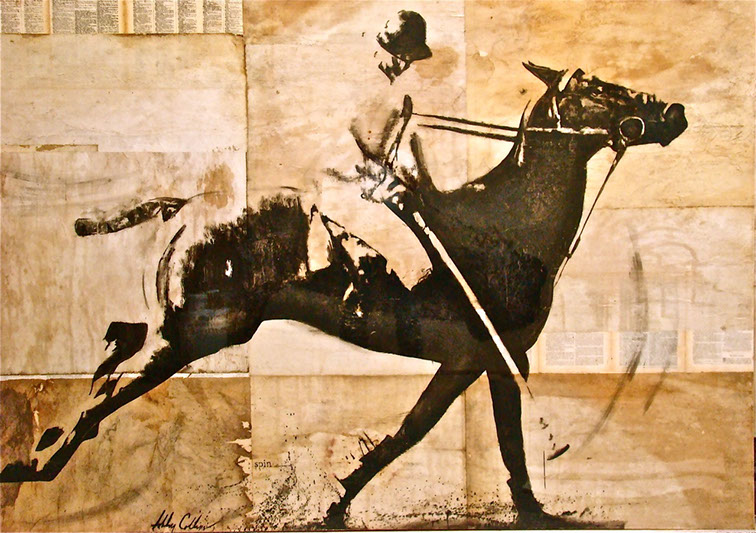


Bridge
Mixed Media, Oil on Panel, Aged Paper,
Hand Fired Resin Finish
84 in x 96 in
Mist
Mixed Media, Oil on Panel, Aged Paper,
Hand Fired Resin Finish
84 in x 96 in
Mr Brown
Mixed Media, Oil on Panel, Aged Paper, Historical Documents,
Hand Fired Resin Finish
48 in x 60 in
Perform
Mixed Media, Oil on Panel, Aged Paper,
Hand Fired Resin Finish
48 x 72 Inches
Reve
Mixed Media, Oil on Panel, Aged Paper, Hand Fired Resin Finish
48 in x 72 in
Silas
Mixed Media, Oil on Panel, Aged Paper, Hand Fired Resin Finish
60 x 84 Inches
Spin
Mixed Media, Oil on Panel, Aged Paper,
Hand Fired Resin Finish
60 in x 84 in
4 - 7
<
>
BEA OXENBERG
Bea Oxenberg sculpted for more than 30 years prior to her passing away in 2010. She studied and worked in many locations in South Florida including the Sculpture Center in Hollywood, FL. Her knowledge and experience in many different materials, including all types of wood and stone made her into a skilled sculptor allowing her to experiment with forms that nature has provided and Oxenberg had perfected. She had a keen sense in keeping the natural shapes and patterns to support and enhance her visions.
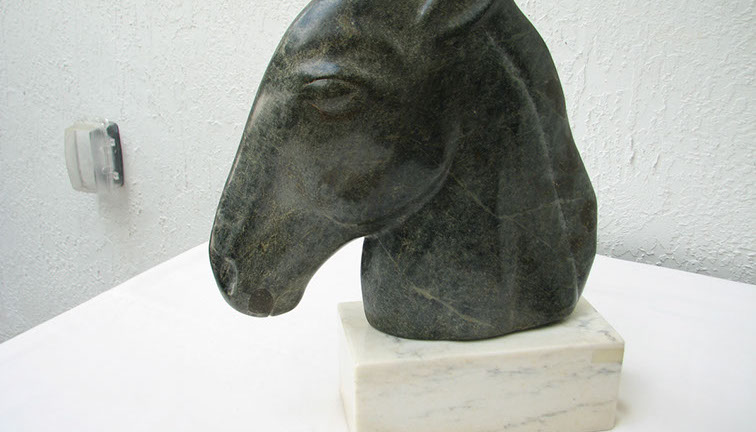
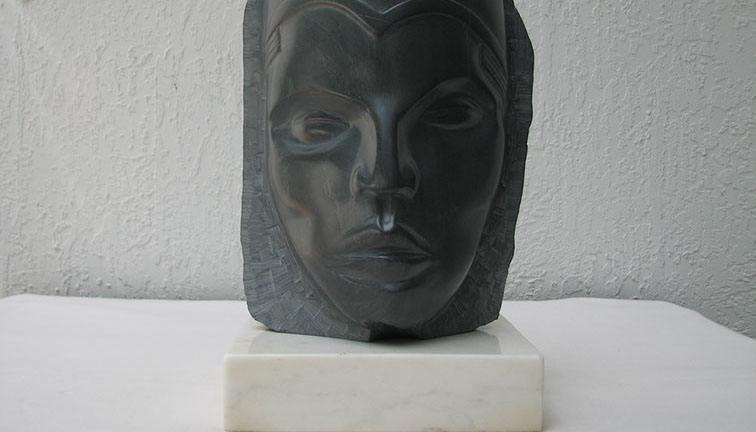
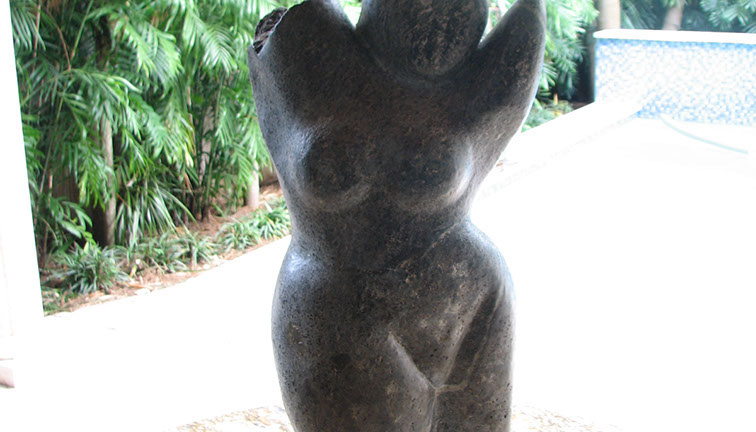
Horse Head
Green Marble on White Marble Base
The Fairest of Them All
Black Marble on White Marble Base
Torso
Green Marble on White Marble Base
2 - 3
<
>
BRYAN HUNT
Bryan Hunt is an American sculptor who was born in Terre Haute, Indiana on June 7, 1947. His family moved to Tampa, Florida in 1955. He worked at the Kennedy Space Center as an engineer's aide and draftsman, 1967-1968, during the NASA Apollo Program and the manned-mission to the moon. In 1968, he moved to Los Angeles to enroll in the Otis Art Institute, where he received a BFA in 1971.
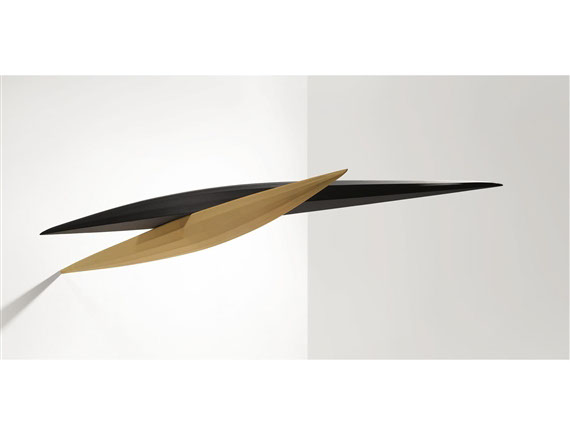
Axial Airship
Wood, Steel Construction with Synthetic Fabric
1 - 1
<
>
CESAR SANTOS
Cesar Santos (Cuban-American, b. 1982) has a worldly art education, with works viewed around the globe- from the Annigoni Museum in Italy and the Beijing Museum in China, to Chelsea, New York. Santos studied at Miami Dade College, where he earned his arts degree in 2003. He then attended the New World School of the Arts before traveling to Florence, Italy. In 2006, he completed the “Fundamental Program in Drawing and Painting” at the Angel Academy of Art in Florence studying under Michael John Angel, a student of artist Pietro Annigoni. Santos’ work reflects both classical and modern interpretations juxtaposed within one painting. His influences range from the Renaissance, to the masters of the nineteenth century, to Modernism. With superb technique, he infuses a harmony between the natural and the conceptual to create works that are provocative and dramatic. Among Santos’ solo exhibitions are “Paisajes y Retratos (Landscapes and Portraits)” in the National Gallery in San Jose, Costa Rica; “Syncretism” at the Eleanor Ettinger Chelsea Gallery in New York; “Beyond Realism” with Oxenberg Fine Art in the Miami Wynwood Art District and “New Impressions” at the Greenhouse Gallery in San Antonio, among many others. The artist has received numerous accolades, including first place in a Metropolitan Museum of Art competition. His work has been exhibited throughout the U.S., Europe and Latin America, including the Frost Art Museum in Miami, the Villa Bardini Museum in Italy and the National Gallery in Costa Rica.

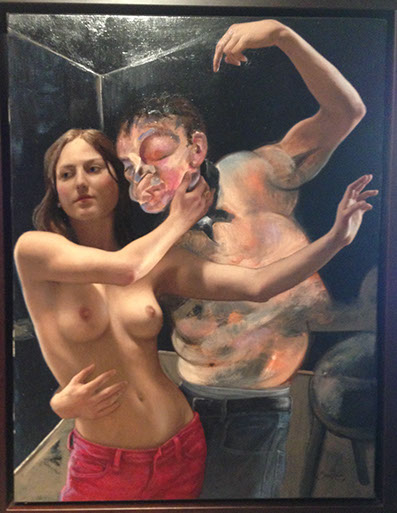
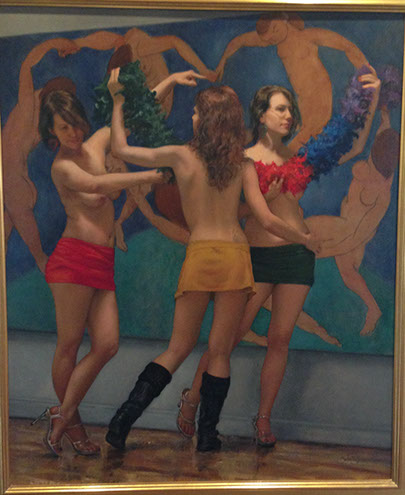
The Explorer
Oil on Linen
58 in x 40 in
Dancing with Mr Bacon
Oil on Linen
30 in x 23 in
Three Graces
Oil on Linen
48 in x 40 in
1 - 3
<
>

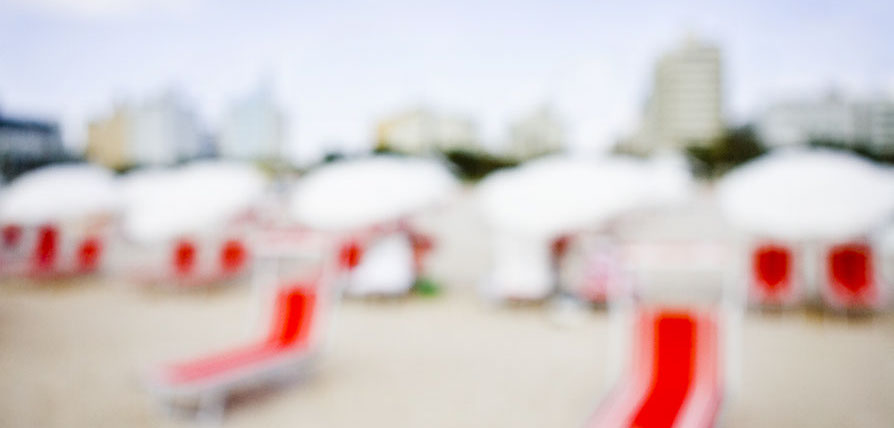

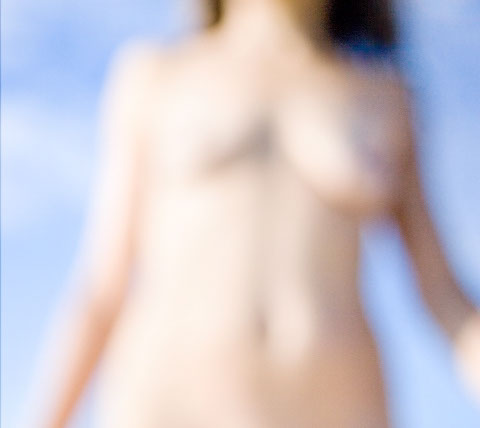
Les Copines Grace
Photo on Canvas
Beach Series VI
Photo on Canvas
Beach Series II
Photo on Canvas
Les Copines Unbroken
Photo on Canvas5
4 - 4
<
>

DANIEL ARSHAM
New York based artist Daniel Arsham straddles the line between art, architecture and performance. Raised in Miami, Arsham attended the Cooper Union in New York City where he received the Gelman Trust Fellowship Award in 2003. Architecture is a prevalent subject throughout his work; environments with eroded walls and stairs going nowhere, landscapes where nature overrides structures, and a general sense of playfulness within existing architecture. Arsham makes architecture do things it is not supposed to do, mining everyday experience for opportunities to confuse and confound our expectations of space and form. Simple yet paradoxical gestures dominate his sculptural work: a facade that appears to billow in the wind, a figure wrapped up in the surface of a wall, a contemporary object cast in volcanic ash as if it was found on some future archaeological site.
Pixel Cloud (New York)
Plastic & Paint
20 in x 39 in x 39 in
1 - 1
<
>
DAVID BANEGAS
David Banegas (July 4, 1975) is a Bolivian born artist, specializing in action painting. David is best known for his colorful portraits of Hollywood’s historic and contemporary A-listers such as Marilyn Monroe, Heath Ledger, and Johnny Depp.
David began his artistic journey at a young age. At a mere 11 years old he had his first art gallery showing in Campo Grande, Brazil. Self-portraits and images in their actual likeness were his main focus. At age 12, he painted a portrait of Bolivian President Hugo Banzer. Upon receipt of the portrait, Banzer awarded David the opportunity to study privately with Masaiko Fujjita, old master art teacher from Japan. During his two year apprenticeship, David mastered paintings of landscapes, florals, and buildings using unique brush techniques.
David has the philosophy of giving as much as you can, and then it will be given to you. In 2008, he did a portrait of Marilyn which was auctioned to benefit ‘The Dragonfly Foundation’, focused on bringing joy and comfort to children with cancer, founded by P. J. Schrantz, a retired New York City firefighter whose son passed away from Leukemia. David remains dedicated to working for children’s charities around the United States and South America, as David says, “They are our future”. David has established the ‘David Banegas Foundation’ which is primarily focused on providing children with shoes, both domestically and in his native country of Bolivia.
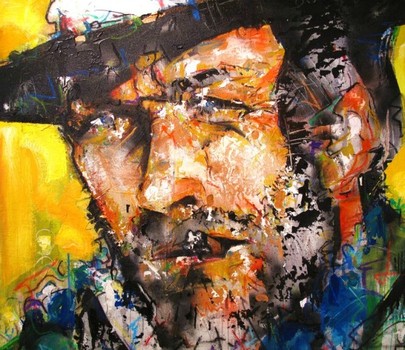
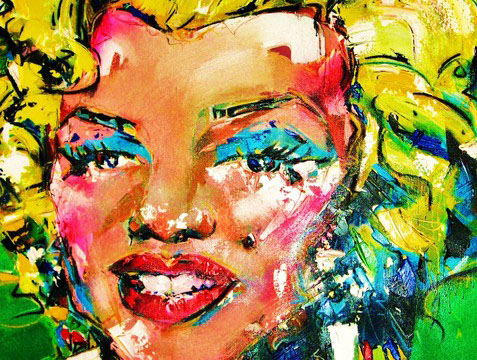
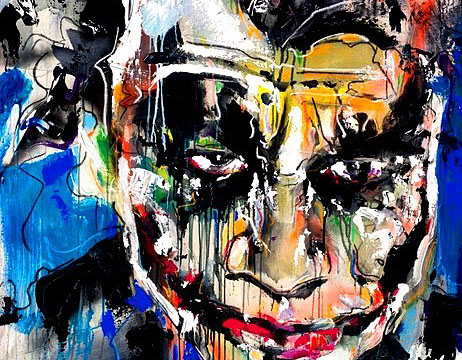

Clint Eastwoeod
Marilyn
The Joker-RIP Heath Ledger
2 - 3
<
>
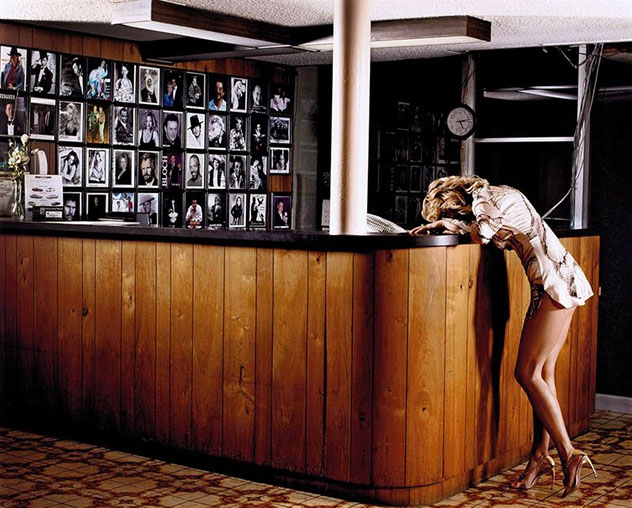
Movie Star
Photo in Light Box
40 in x 4 in x 32 in
1 - 1
<
>
DAVID DREBIN
David Drebin is an American photographer, known for his sexy, intrigue-filled images of celebrities and non-celebrities alike. “I like pictures that are often duplicitous and have hidden meanings,” Drebin has said. He has shot ad campaigns internationally for companies such as American Express and Davidoff and has contributed to magazines ranging from Vanity Fair, Travel + Leisure, and GQ to Elle and Rolling Stone. He has also made portraits of Charlize Theron, John Legend, Sandra Bernhard, Kevin Bacon, and Diane Von Furstenberg.
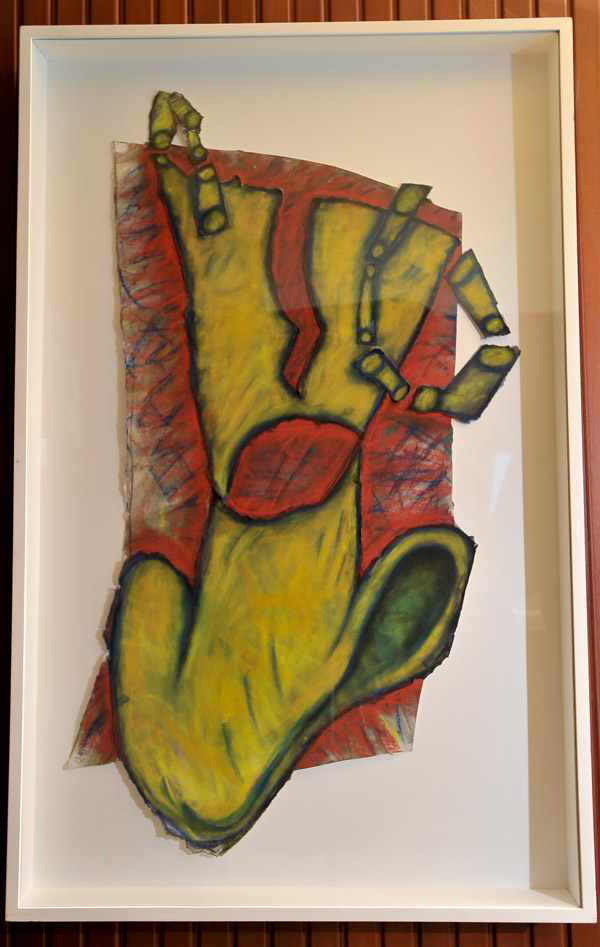
Drawing for Dream of Life
Pastel on Paper
50 x 28 Inches,
1 - 1
<
>
ELIZABETH MURRAY
Elizabeth Murray was born in Chicago in 1940 and passed away in 2007. She earned a BFA at the Art Institute of Chicago and an MFA from Mills College in Oakland, California. Murray’s distinctively shaped canvases break with traditional two-dimensional works and her paintings are abstract compositions rendered in bold colors and multiple layers of paint. Details in her work reveal a fascination with dreams and aspects of domestic life.
ENZO FIORE
Enzo Fiore was born in Milan on July 13, 1968. After attending an artistic lyceum in Milan, he received his diploma in painting from the Academy of Fine Arts of Brera under the tutelage and guidance of Luciano Fabro, a firm believer in Poor Art (Arte Povera). During the following years, Enzo dedicated his talents to restoration of antique paintings as well as designing theatrical settings.
Exhibitions have been held both in Venice and Cortina d’Ampezzo.
Since his debut as an artist in 1997, Fiore takes his material from nature itself to create his portraits and recreations of important works, a unique technique utilizing musk, twigs, roots, earth, stones, resin and cement which all combine in becoming his instruments to create forms suspended between reality and fantasy. In 2008 the artist also began utilizing a variety of insects in the composition of his works. His works can be found in numerous private and public collections.
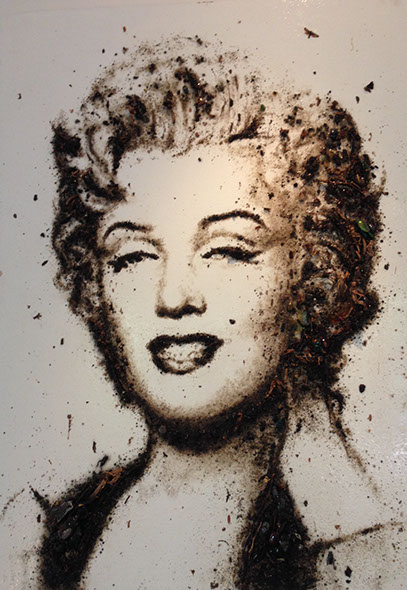
Genesis Marilyn
Mixed Media on Canvas
45 x 33 Inches
1 - 1
<
>
FABIO MESA
Fabio Mesa was born in Medellin, Columbia in 1970. He started his studies in Medellin's Escuela de Bellas Artes in 1981. After 5 years of art studies he began his professional career, stopping briefly to enhance his studies for two years in Medellin's Art Workshop. He currently resides in Medellin where he has his own workshop. He alternates his time between Colombia and foreign countries where he's invited to participate in exhibits and collaborative workshops.
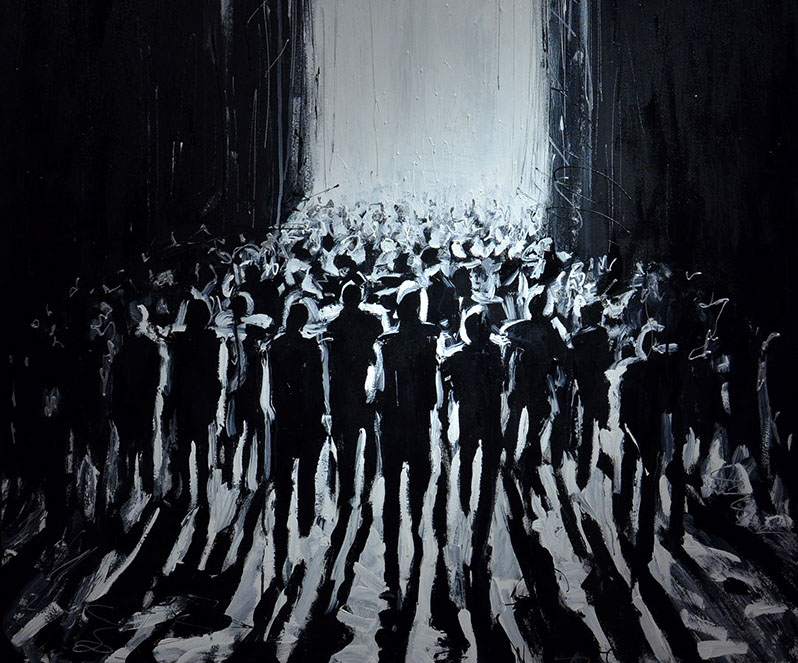
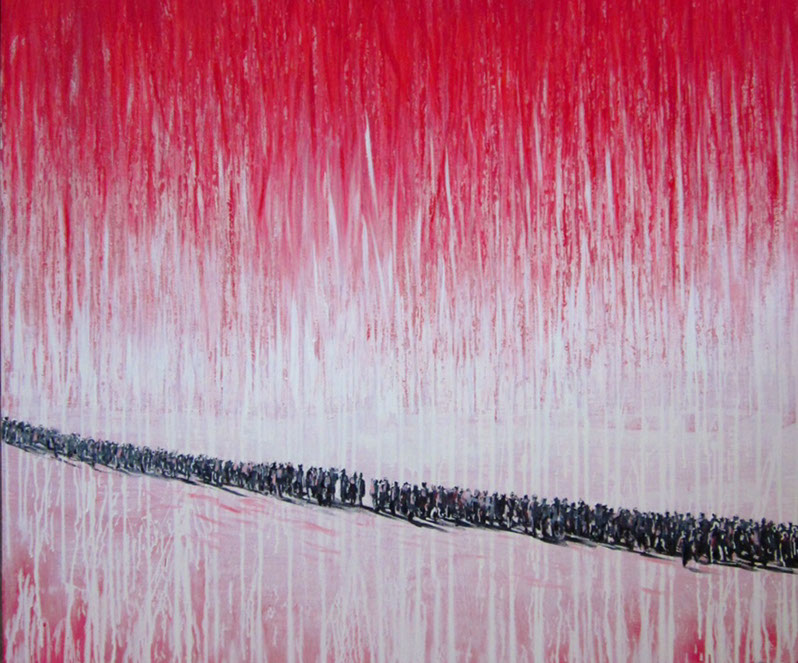
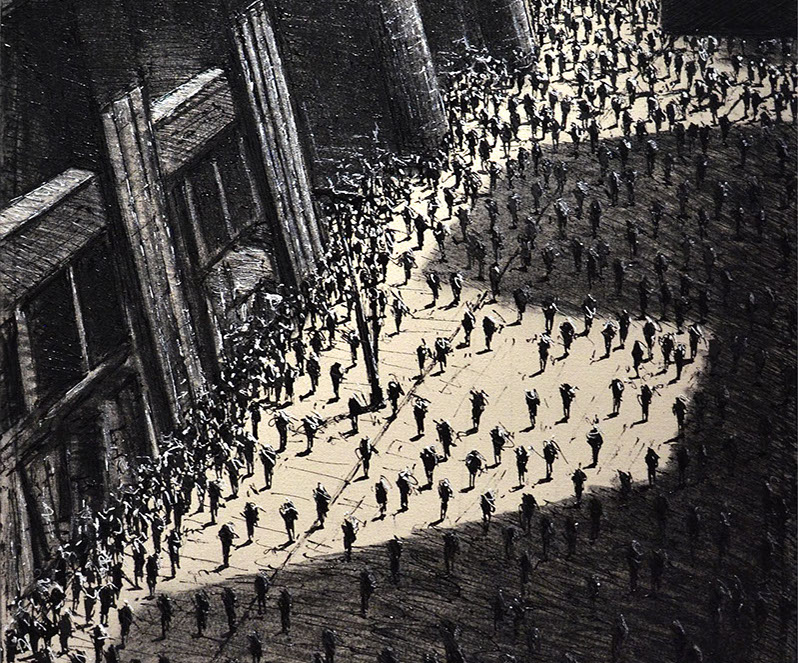
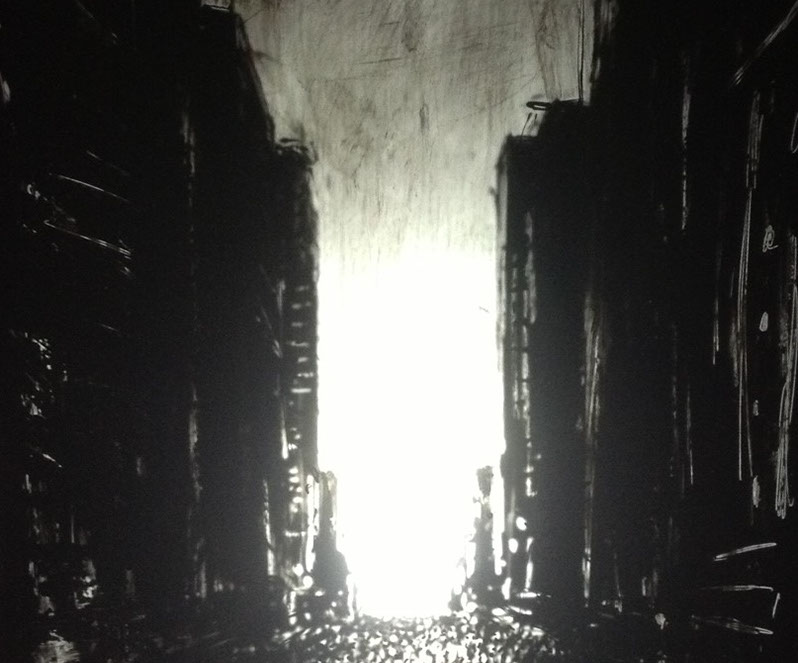
Buscadores de Suenos Series, 2010
Acrylic on Canvas
60 in x 48 in
Migraciones Obligadas Series Rojo, 2013
Acrylic on Canvas
71 in x 47 in
Nuevos Habitantes Series, 2012
Acrylic on Canvas
61 in x 35 in
Nuevos Habitantes, 2013
Plexiglass, Acrylic and LED Light
28 in x 20 in
2 - 4
<
>
FEDERICO CORREA
Federico Correa was born in Salinas, California to a family of farm workers and grew up in a farming community called Soledad in the Salinas Valley. A “chicano” with familial roots in Zacatecas and Aguascalientes, Mexico, Correa spent his early life immersed in Mexican culture with Spanish being his first language. He earned a Master of Fine Arts degree at Mount Royal School of Painting, The Maryland Institute College of Art. Correa is captivated by rawness and visceral truth and is guided by the unconscious memory, paint and canvas before him. His work is an endeavor about love, discovery, courage and revelation.
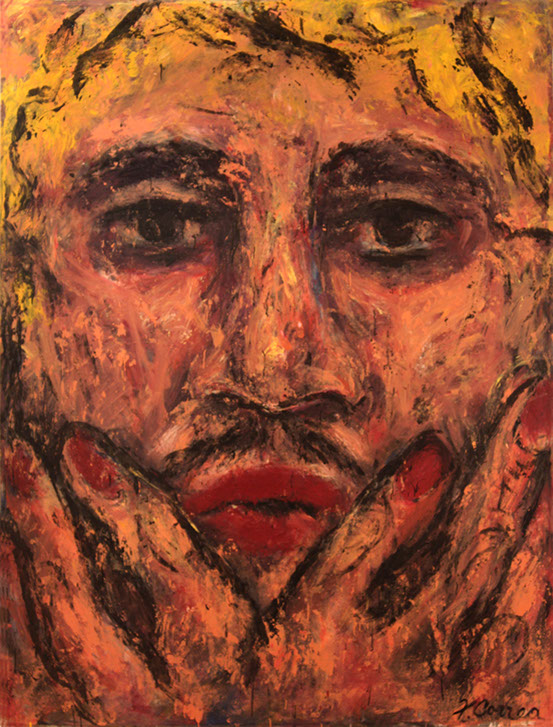
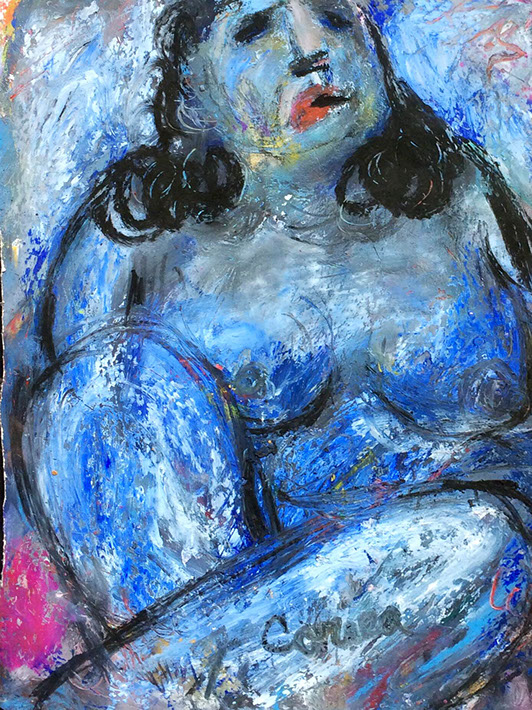
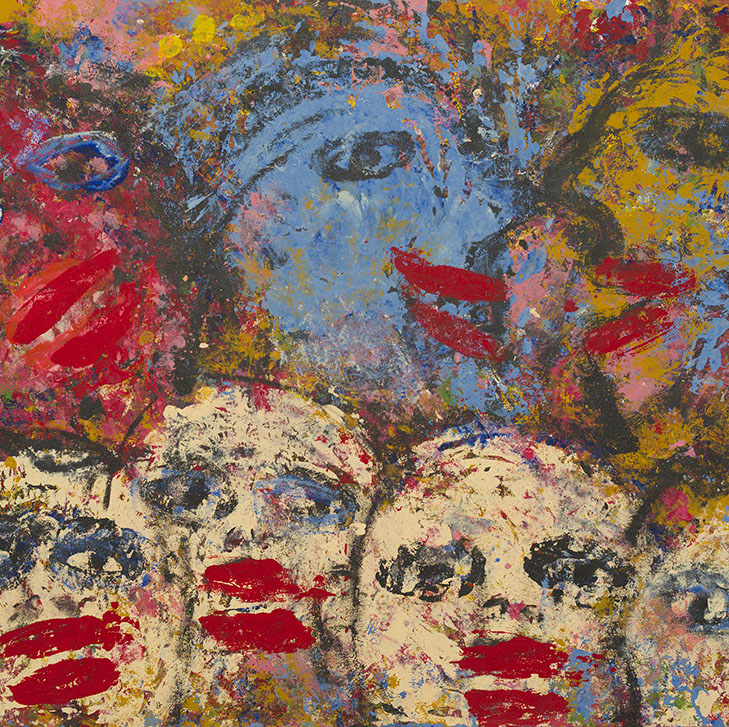

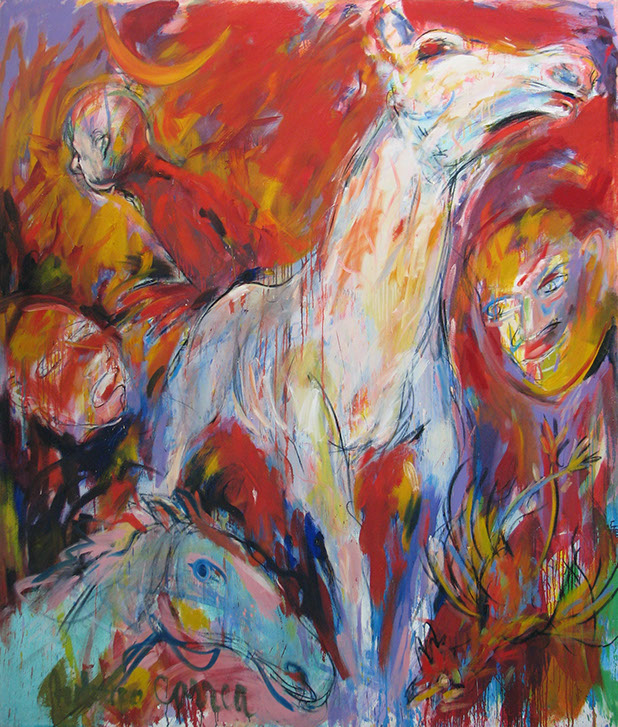
A Portrait of Young Chicano Artist as a Blonde with Lipstick, 2014
Oil on Canvas
96 in x 72 in
Blue Woman, 2010
Mixed Media on Paper
11 in x 8.5 in
Los Guapos, 2012
Acrylic on Paper
30 in x 44 in
Noche, 2012
Oil on Canvas
84 in x 72 inc
White Horse, 1987
Oil on Canvas
96 in x 72 inc
2 - 5
<
>
FERNANDO VIGNOLI
Fernando Vignoli was born in Belo Horizonte, State of Minas Gerais, Brazil, on August 14, 1960. He studied at Colégio Militar (a high school held by the Brazilian Army) and concluded his high school education at Colégio Pitágoras where he majored in architectural design. He graduated in Visual Communication at ESAP Escola Superior de Artes Visuais (University School of Visual Arts). Vignoli’s oil paintings rife with passageways, labyrinths, doors and windows are swathed in light to symbolize the possibility of escape from an unwanted reality. His strict, structured childhood under the watchful eye of his father, an army captain, inspires many of his works.
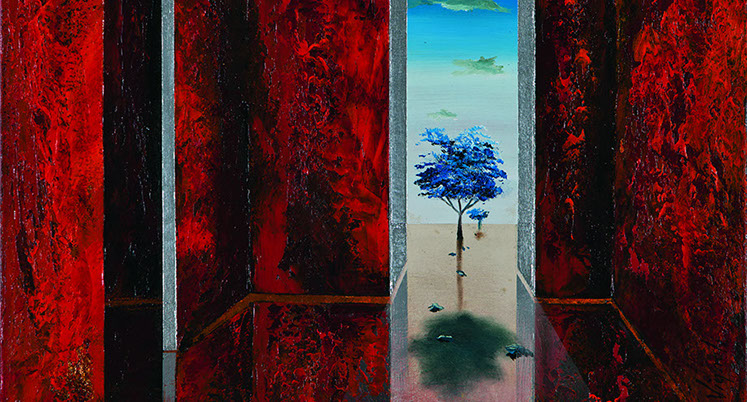
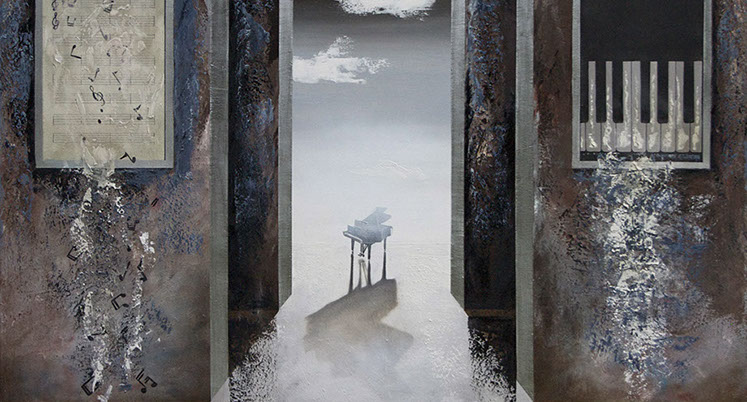
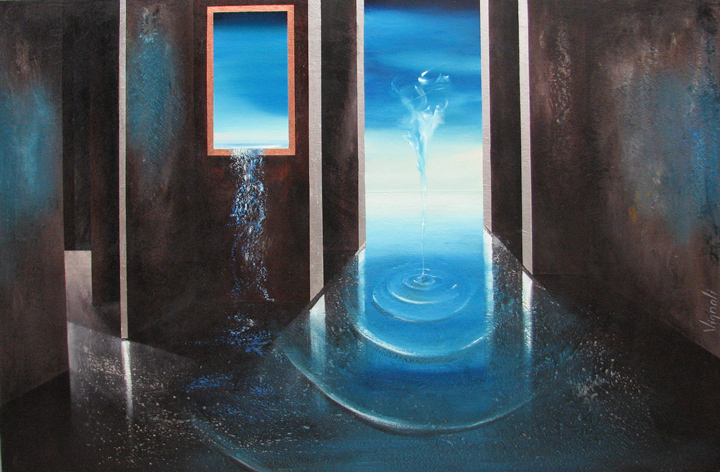
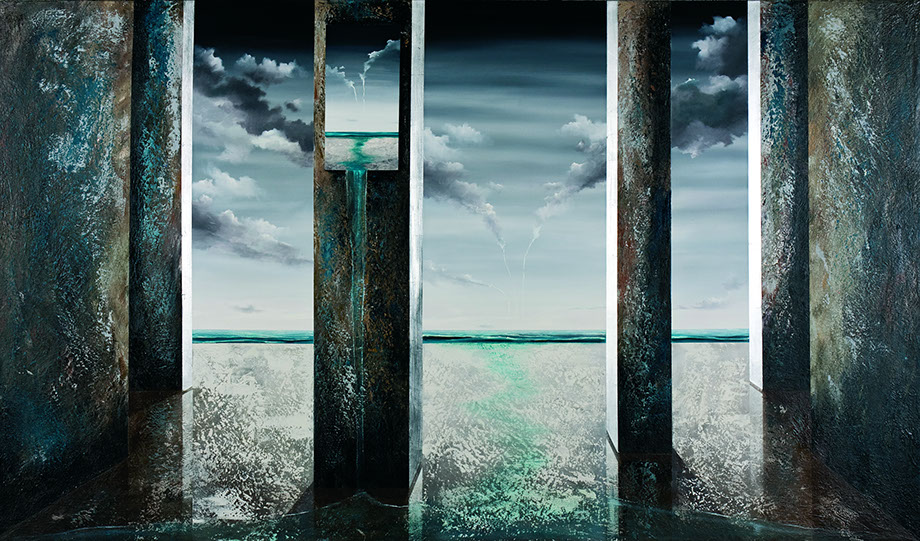
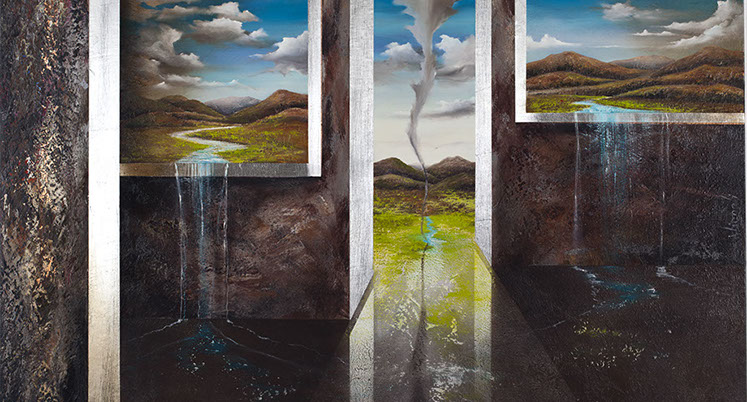
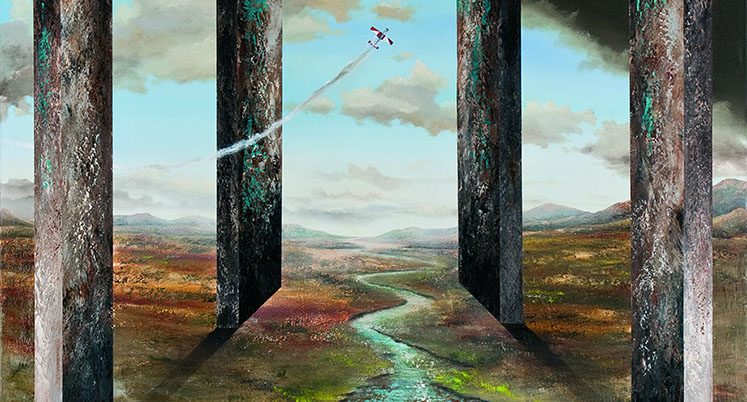
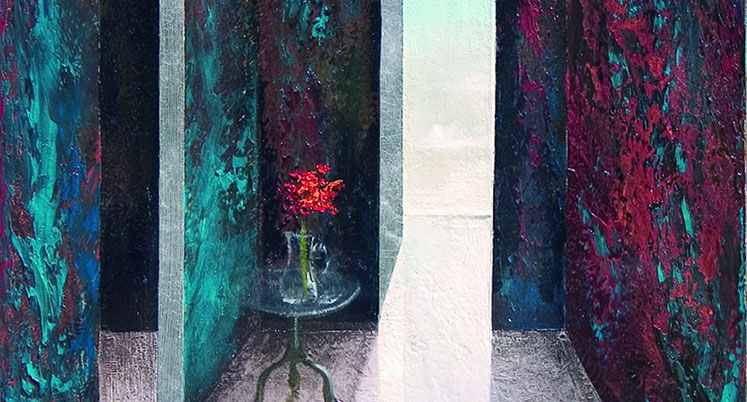
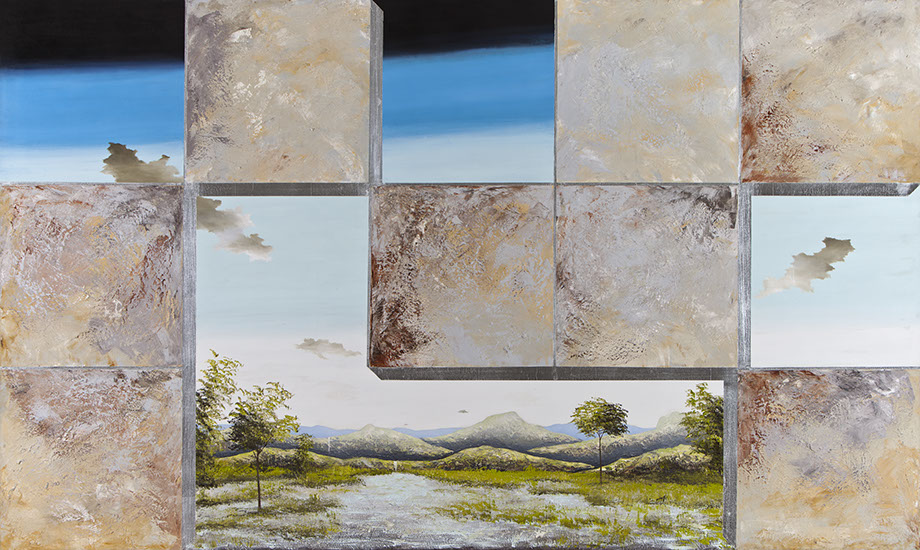
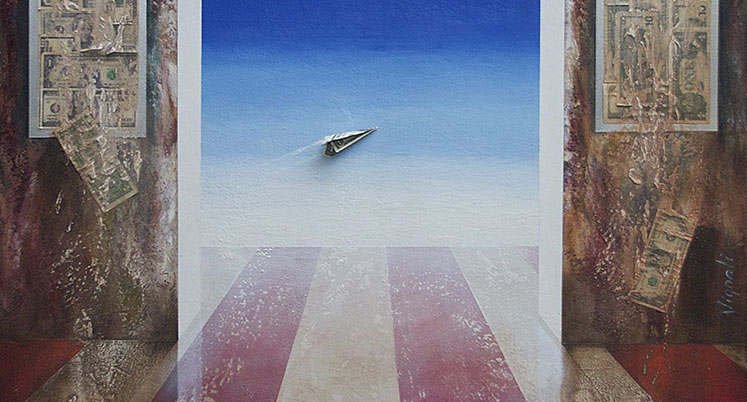
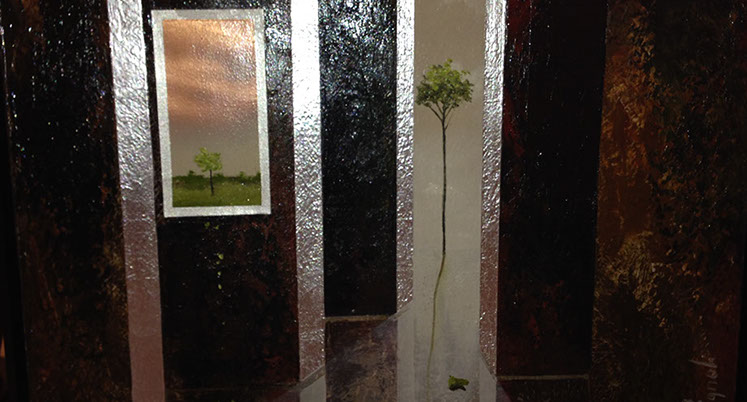
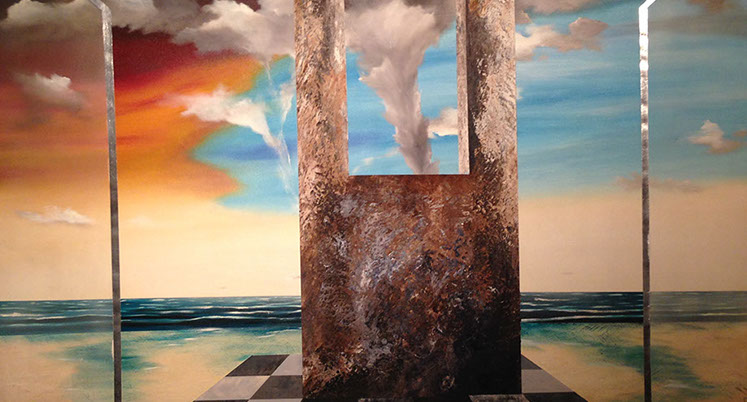
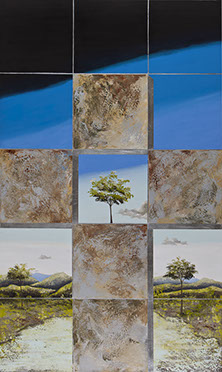

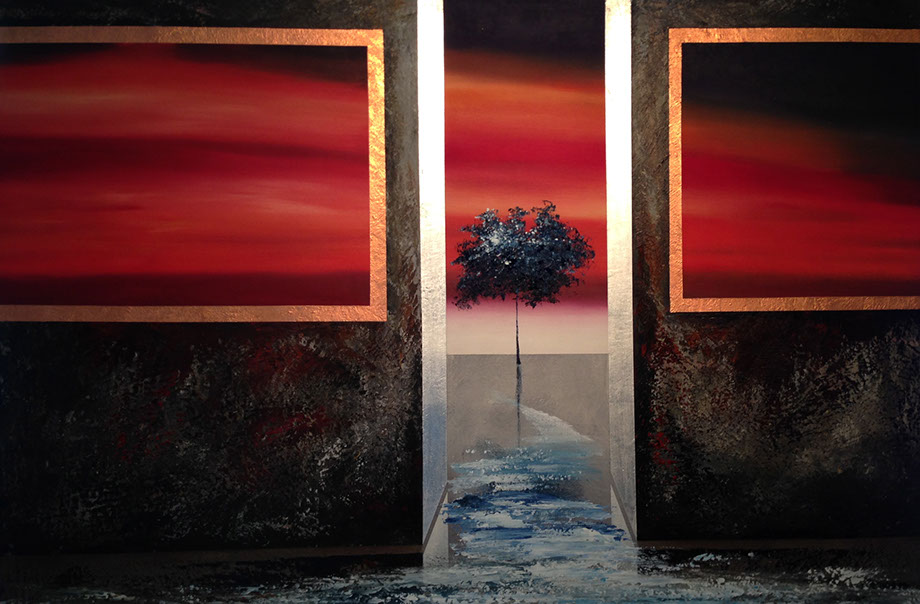
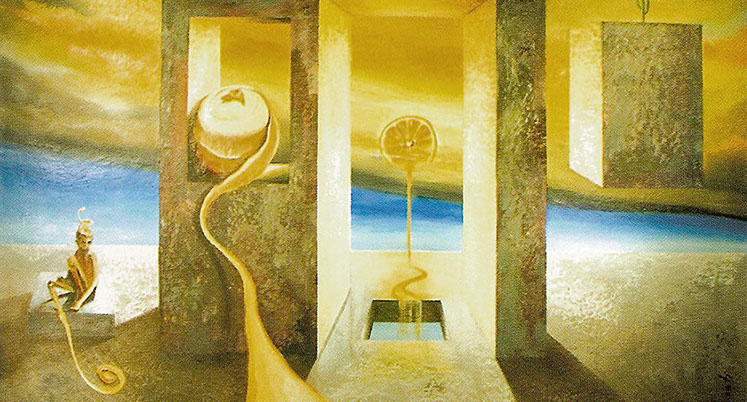
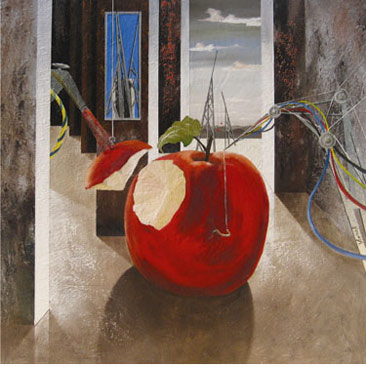
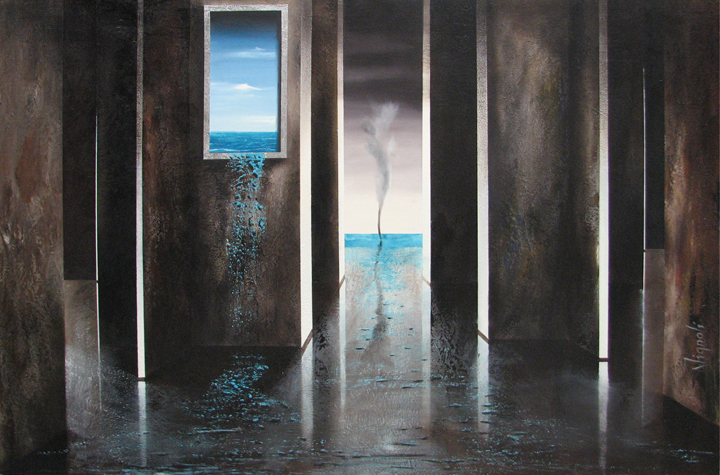
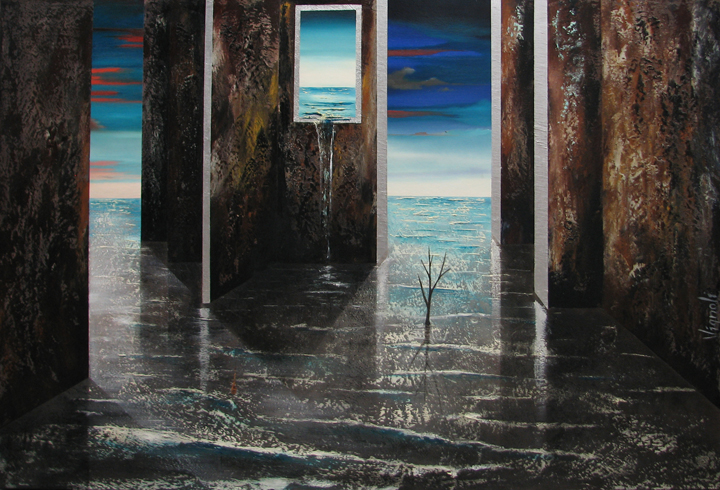
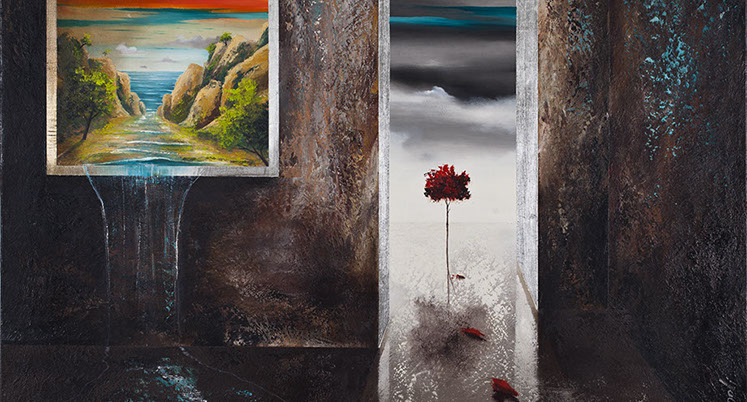
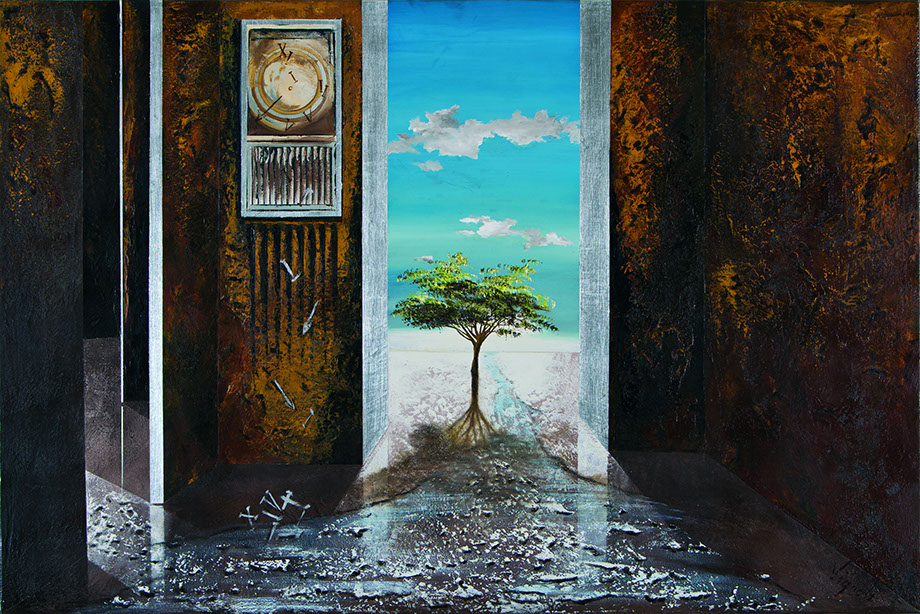
Blue Fire, 2012
Oil on Canvas
18 in x 24 in
Bossa Nova, 2010
Oil on Canvas
47 in x 49 in
Cataclisma
Oil on Canvas
40 in x 60 in
Corredor de Tornados, 2013
Oil on Canvas
60 in x 94 in
Kansas, 2013
Oil on Canvas
47 in x 59 in
L' Equilibrista, 2013
Oil on Canvas
59 in x 59 in
Lonely, 2013
Oil on Canvas
20 in x 16 in
Mosaico de Terra, 2013
Oil on Canvas
59 in x 98 in
My Last Money, 2008
Oil on Canvas
47 in x 47 in
Natural Windows, 2013
Oil on Canvas
16 in x 20 in
Paraiso Tropical, 2013
Oil on Canvas
46 in x 58 in
Sagrado Coracao, 2013
Oil on Canvas
98 in x 59 in
Terra de Arvore, 2013
Oil on Canvas
39 in x 59 in
Terra de Fogo, 2013
Oil on Canvas
39 in x 59 in
The Man That Eats Abaporu, 2006
Oil on Canvas
48 in x 58 in
The Reconstruction of the Big Apple, 2007
Oil on Canvas
55 in x 55 in
Tromba d' Agua, 2013
Oil on Canvas
40 in x 60 in
Tsunami II, 2013
Oil on Canvas
40 in x 60 in
Um Quarto Ambiente, 2013
Oil on Canvas
47 in x 59 in
Nature's Time, 2008-2012
Oil on Canvas
31 in x 47 in
20 - 20
<
>
FRANK STELLA
Frank Stella (born May 12, 1936) is an American painter and printmaker, noted for his work in the areas of minimalism and post-painterly abstraction.
After attending high school at Phillips Academy in Andover, Massachusetts, he attended Princeton University, where he majored in history and met Darby Bannard and Michael Fried. Early visits to New York art galleries influenced his artist development, and his work was influenced by the abstract expressionism of Jackson Pollock and Franz Kline. Stella moved to New York in 1958, after his graduation. He is one of the most well-regarded postwar American painters still working today. He is heralded for creating abstract paintings that bear no pictorial illusions or psychological or metaphysical references in twentieth-century painting.[3]
Today, Stella lives in the Greenwich Village and keeps an office there but commutes on weekdays to his studio in Rock Tavern, New York.
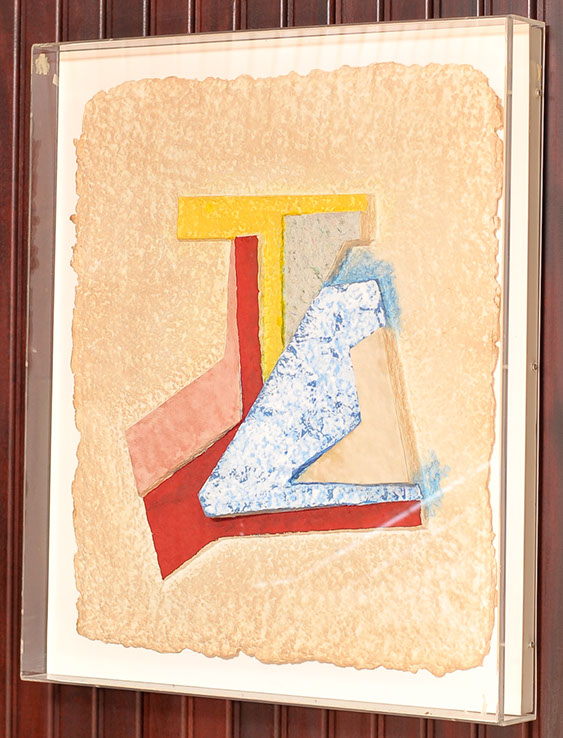
Nowe Miastro, 1975
Tempera and Paper Collage
on Handmade Paper
25 in x 22 in
1 - 1
<
>
HIROSHI SUGIMOTO
Hiroshi Sugimoto was born and raised in Tokyo, Japan. He reportedly took his earliest photographs in high school, photographing film footage of Audrey Hepburn as it played in a movie theater.[1]In 1970, Sugimoto studied politics and sociology at Rikkyō University in Tokyo. In 1974, he retrained as an artist and received his BFA in Fine Arts at the Art Center College of Design, Pasadena, California. Afterwards, Sugimoto settled in New York City and soon started working as a dealer of Japanese antiquities in Soho.
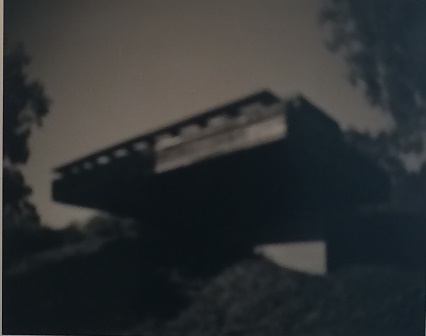
Sturges House - Frank Lloyd Wright, 1997
Gelatin Silver Print Mounted on Paper
20 in x 24 in
1 - 1
<
>
HUMBERTO CASTRO
Humberto Castro was born in Havana, Cuba, in 1957. He graduated from the Academy of Fine Arts San Alejandro and Instituto Superior de Arte (ISA) in Havana.
He works in painting, drawing, printmaking, ceramics and installations. In his early years, he also delved into performance art, especially using it as a vehicle for social criticism in Cuba. Castro is one of the most active members of the group widely recognized as the “Generation of the 80s” in Cuba, which generated changes in the aesthetic and conceptual art scene of the island.
In 1983 he founded the team Hexagon in which, alongside other artists, he mounted installations aimed at provoking public participation in the work. Between 1980 and 1984 he produced an extensive body of graphics, particularly innovative in the intaglio technique. Additionally, Castro has designed sets for theater and film in Cuba.
In 1989 he emigrated to Paris, France, where he lived for ten years and became active in the Parisian intellectual scene, holding exhibitions and giving conferences across Europe. In 1999 he moved to the United States and currently lives and works in Miami, FL.
Since the beginning of his career, Castro has received numerous international awards, and his work is present in notable museum and private collections. His work and artistic attitude have influenced subsequent generations of artists within Cuba.
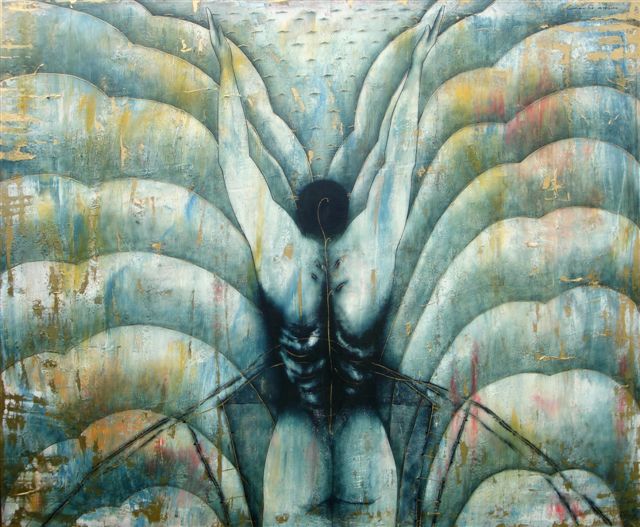
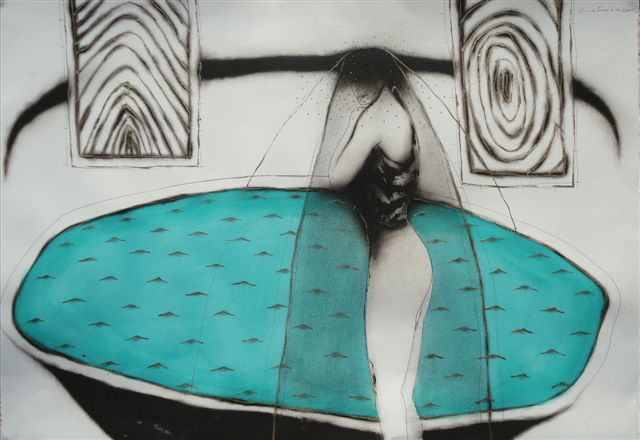

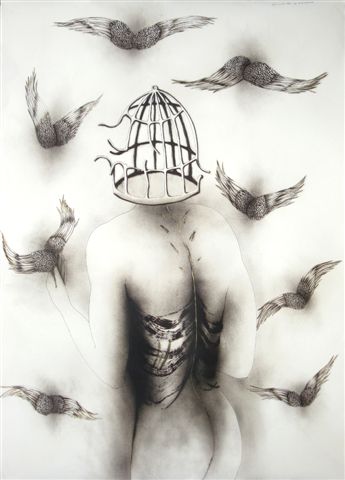
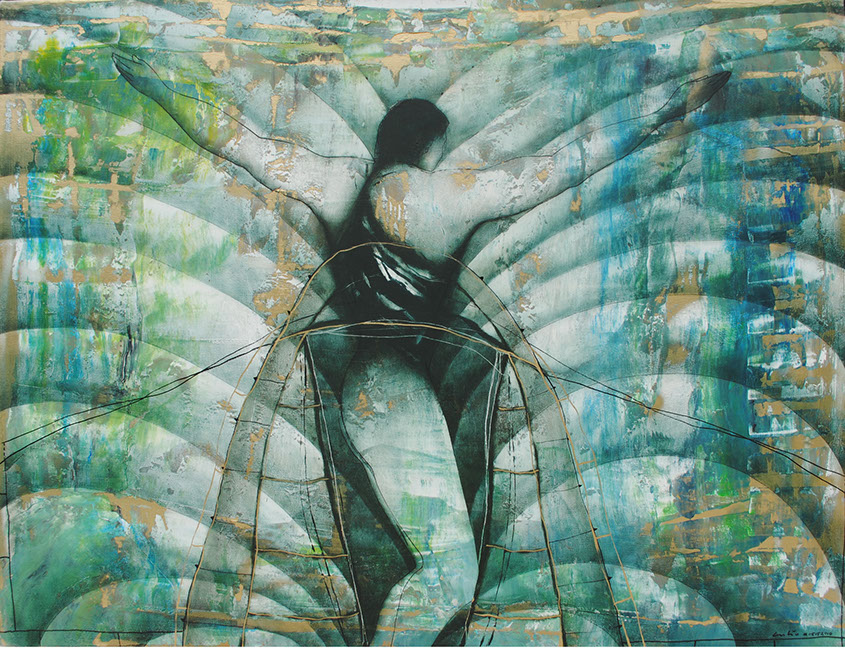
%2c%202010%2c%2045%20x%2064%20inches%2c%20ink%20oil%20and%20acrylic%20on%20fabriano%20paper.jpg)
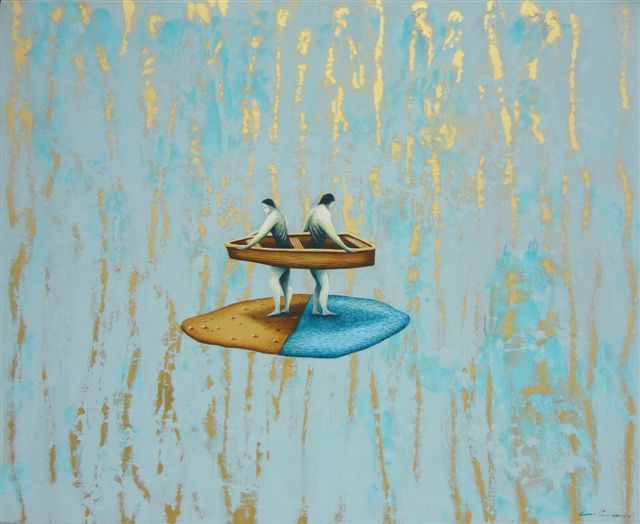
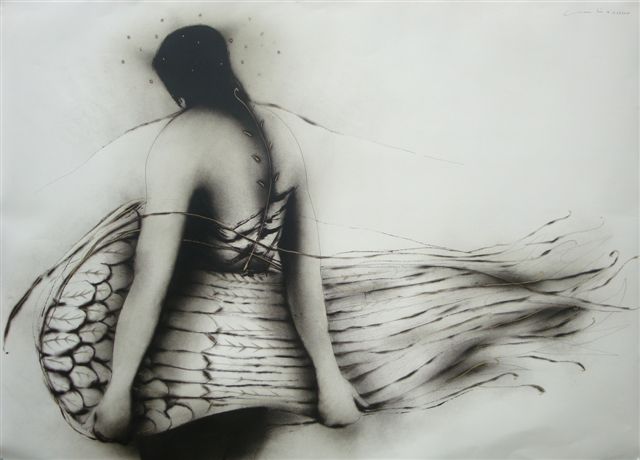
Abriendo las Aguas, 2010
Oil and Acrylic on Canvas
42 in x 68 in
Blue Waters,
Framed
39 in x 29 in
Flying Over The Ocean, 2010
Ink Oil and Acrilic on Fabriano Paper
42 in x 59 in
Freedom, 2011
Ink and Oil on Fabriano Paper
42 in x 59 in
Green Desires, 2010
, Acrylic
42 x 55 Inches
Los Doce Ensayos del Alquimista (Twelve Trials of the Alchemist), 2010
Ink oil and Acrylic on Fabriano Paper
45 in x 64 in
Pies Secos Pies Mojados # II, 2012
Acrylic on Canvas
44 in x 54 in
Ready, 2010
Ink and Oil on Canvas
8 - 8
<
>
JAMES CROAK
James Croak (American, b. 1951) has produced an astonishing body of work during the past twenty years. Using a variety of innovative materials and techniques, including taxidermy, latex rubber, tar, and his trademark cast dirt, he has merged traditional craftsmanship with a late-twentieth-century sensibility, creating sculpture of presence and feeling.
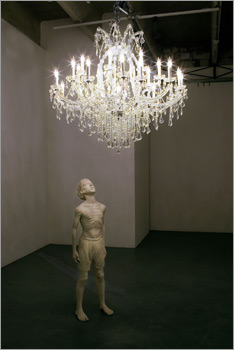
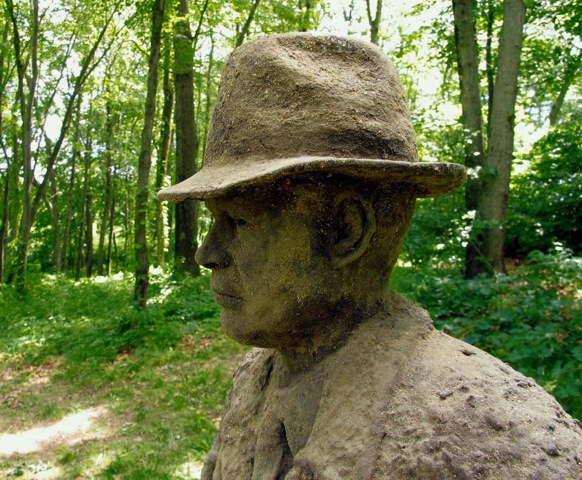
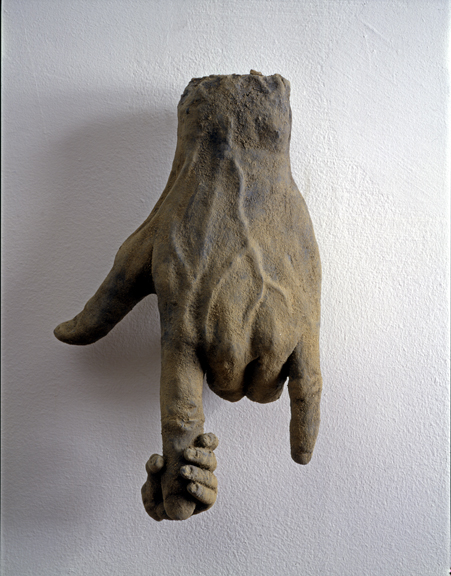

Chandelier Mistaken for God, 2006
Crystal, Resin
Dirt Man
Details
Dirt Hand Series 3
Dirt Man with Shovel, 2007
Cast dirt
76 in x 30 in x 30 in
4 - 4
<
>
James Smith
JAMES SMITH
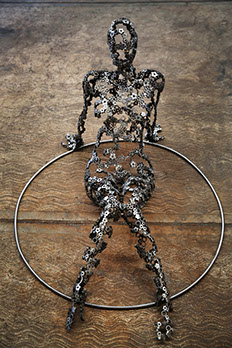
Hula Girl
Welded Iron Pieces, Iron Ring
48 x 44 x 34 Inches
1 - 1
<
>
JENNIFER BARTLETT
Jennifer Bartlett, born March 14, 1941 in Long Beach, CA, is an American artist. She received her BFA in 1963 from Mills College in Oakland, CA and went on to attend the Yale School of Art and Architecture, where she completed her MFA in 1965. Bartlett’s paintings combine abstract and representational styles and she is best known for paintings and prints of mundane objects.
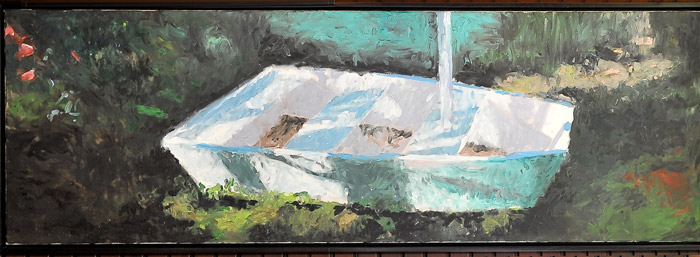
Sandspoint #13
Oil on Canvas
24 in x 72 in
1 - 1
<
>
JOSEPH WHEELWRIGHT
A master carver of stones, trees and bones for over thirty years, Wheelwright brings out the living force in rock and carves trees so that they become sentient creatures. Evidence of nature’s own artistry and works made by ancient civilizations provide the sculptor with steady inspiration. His creative process originates in the woods, on overland rambles in the surrounding pastures, where he tracks the expressive and figurative possibilities in the shapes encountered. Wheelwright lives and works in Boston and Vermont, where he maintains a foundry for casting his tree personages into bronze.

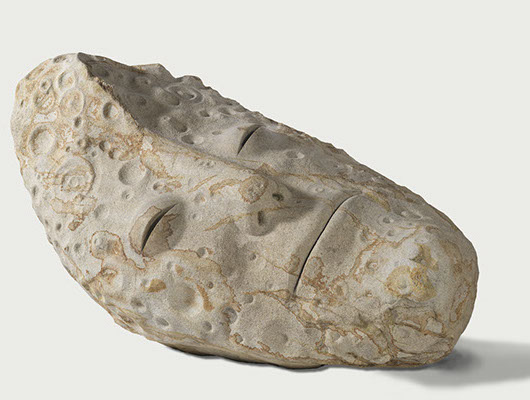
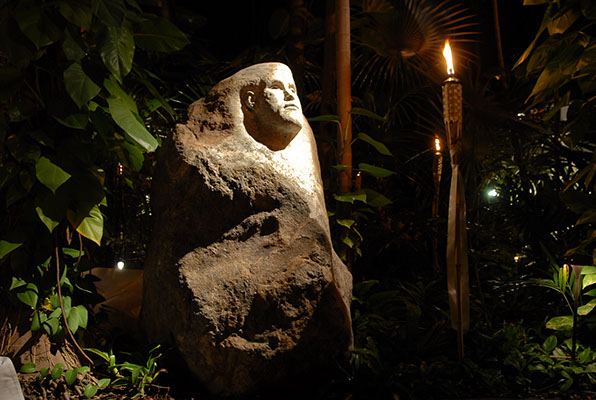
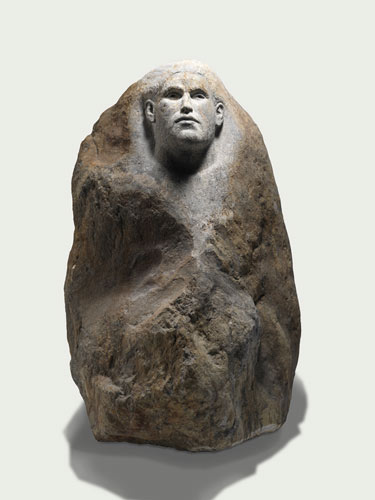
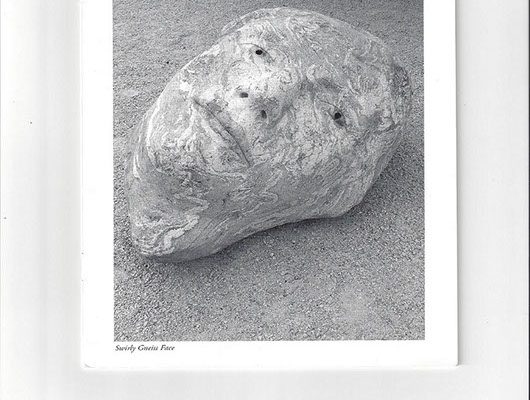
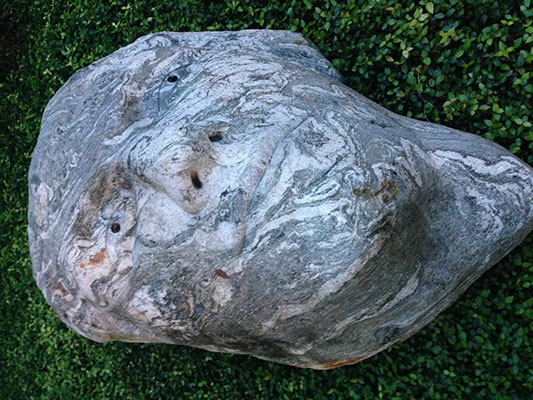
Lovers
Rockababy Moon
Granite
49 in x 80 in x 51 in
Seated Monk (Night View)
Granite
63 in x 47 in x 54 in
Seated Monk
Granite
63 in x 47 in x 54 in
Swirly Gneiss Face
Granite
Swirly Gneiss Face (Another View)
Granite
5 - 6
<
>
KELD MOSEHOLM
Keld Moseholm was born in 1936 in Freltofte, Denmark. He Studied at the Academy of Art, Odense, Denmark and at the Royal Danish Academy of Art, Copenhagen, Denmark. He taught at
the Academy of Art, Odense 1974-75, at high schools and design schools in Denmark 1970-90. TomBass master class at school in Sydney 2006. He is a member of the Danish Society of Artists,
The Danish Association of Visual Arts, The European Academy of art, science and humanities.
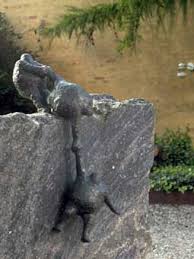
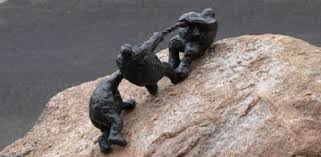
Keld Moseholm Sculpture
Keld Moseholm Sculpture
2 - 2
<
>
LAURIE SIMMONS
Laurie Simmons (born October 3, 1949) is an American artist, photographer and filmmaker currently working in New York and Northwestern Connecticut. Since the mid-1970s, Simmons has staged scenes for her camera with dolls, ventriloquist dummies, objects on legs, and people, to create photographs that reference domestic scenes.[1] Simmons has been the recipient of numerous awards, including the National Endowment for the Arts Grant, the Guggenheim Fellowship, The Distinguished Alumni Award at Temple University, the Roy Lichtenstein Residency in Visual Arts at The American Academy in Rome, among others.[2] She is considered part of The Pictures Generation, along with artists such as Cindy Sherman, Barbara Kruger and Louise Lawler.
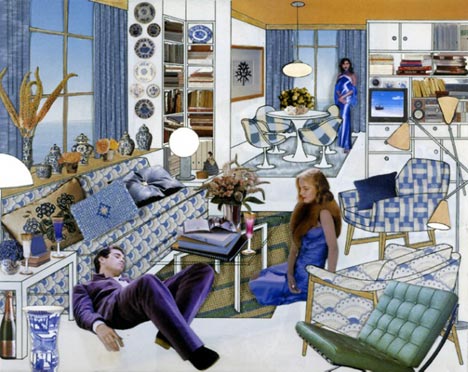
The Instant Decorator Blue Room with Ocean View-Cocktail Party
Flex Print
48 in x 60 in
1 - 1
<
>
LUC DRATWA
Luc Dratwa is best known for his series of photographs taken from the 76th floor of Rockefeller Center with a view of the Empire State Building in New York City. In his photographs, Dratwa is able to catch people as they gaze at the astonishing views. The images consist of three planes: the character, the window and the city, brought together through Dratwa’s lenses. He has been featured in exhibitions in Rome, Paris, Tokyo and New York. Dratwa was born in 1958, and currently resides in Brussels, Belgium
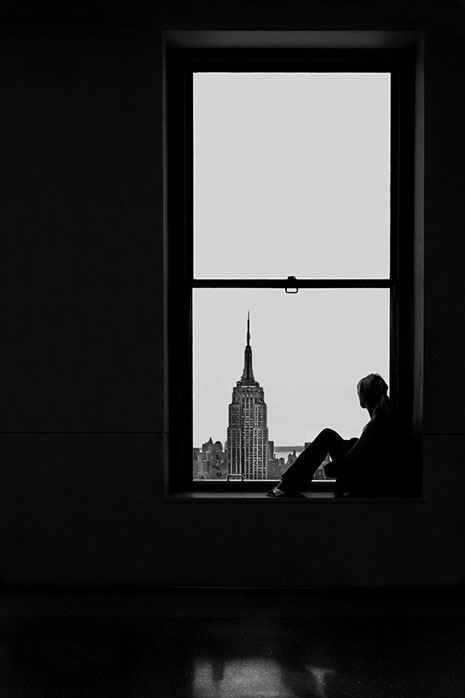
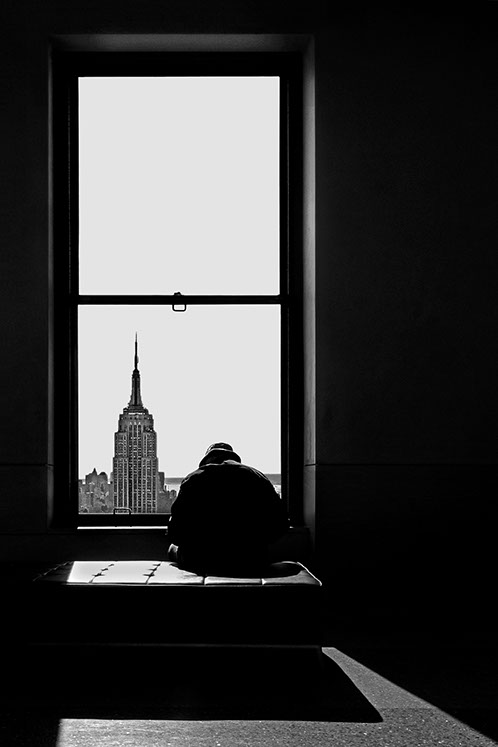
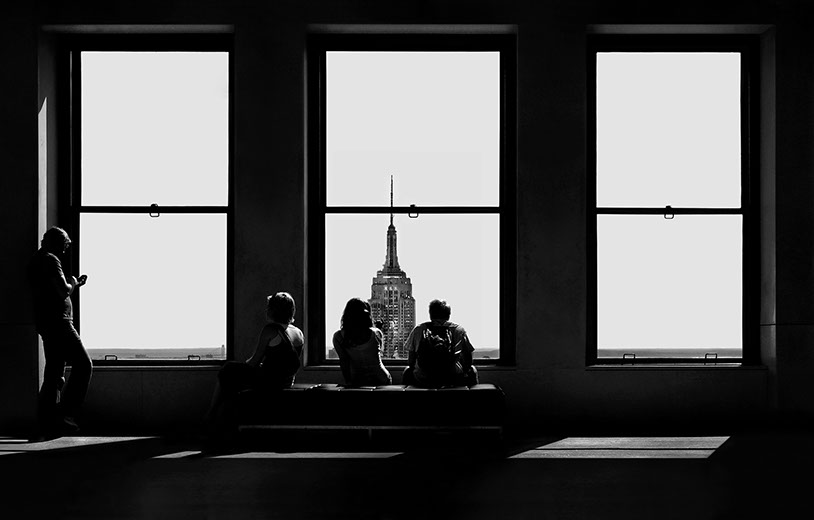
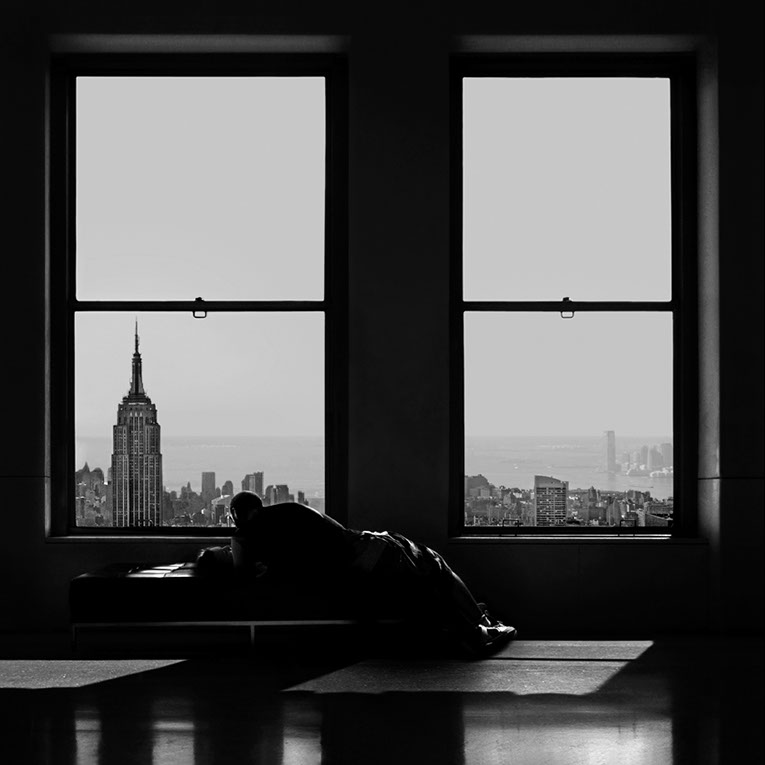
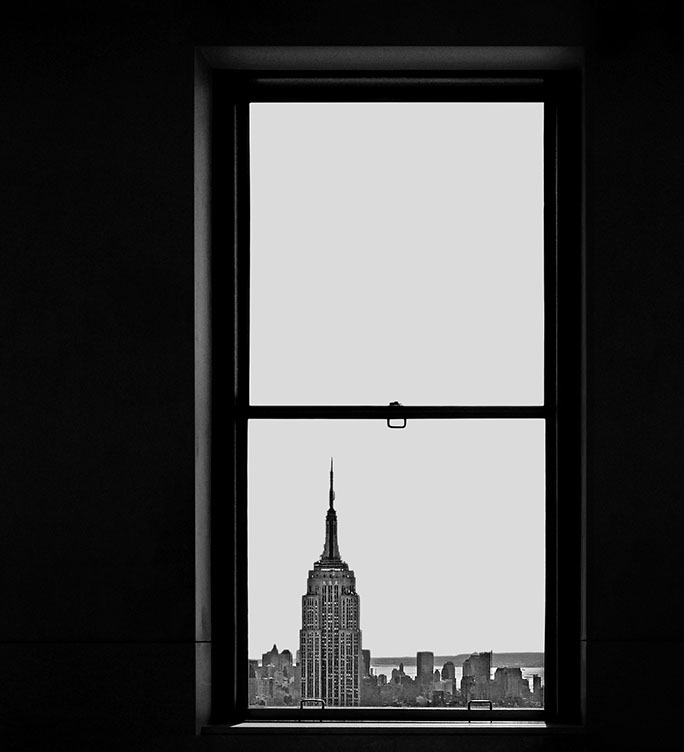
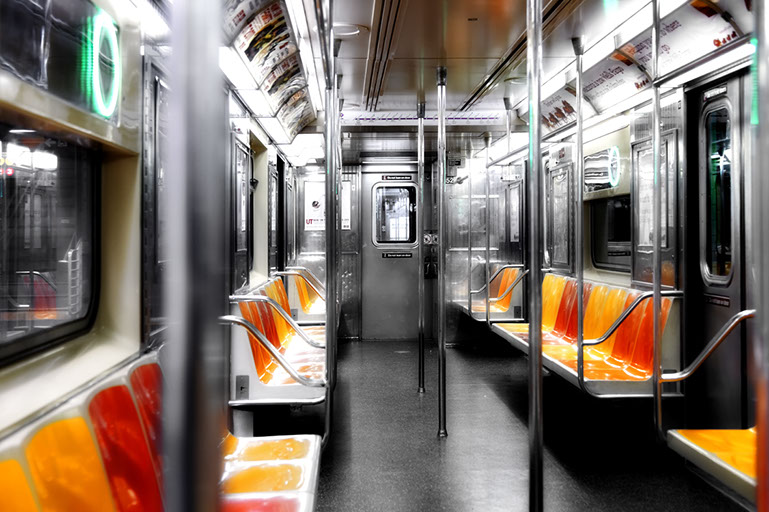
Far Away, 2009
39 in x 59 in /26 in x 39 in /19 in x 29 in
Henry, 2009
39 in x 59 in/26 in x 39 in,/19 in x 29 in
Moment, 2009
59 in x 92 in/39 in x 61 in/29 in x 46 in
NY Lovers, 2009
59 in x 59 in/39 in x 39 in/29 in x 29 in
Only, 2009
39 in x 59 in/26 in x 39 in/19 in x 29 in
Subway 6152, 2011, Edition of 7
Digital Print on Pearl Paper
39 in x 59 in
4 - 6
<
>
MAGGIE GENOVA-CORDOVI
Margarita Genova-Cordovi “Maggie” is a Cuban born artist who has lived in Miami since she was 11 years old. She developed a love for art at a very early age. Once in college her practical nature asserted itself and she made the decision to study architecture instead of fine arts.
After architecture graduation, she started training with the late Cuban landscape artist Felix Ramos. A growing family and demanding career derailed her attempt to bring art back into her life. Finally in 1996 she walked into an art store bought a canvas, paint and brushes and started painting again. Presently she receives training under Cuban abstract artist Baruj Salinas and Cuban contemporary artist Yovani Bauta. She considers painting to be a continuous learning process.
Her paintings are narratives responding to her emotions. Part of this feeling translates into the way she applies washes which dissolve on to the painted surface, this leads her on a journey of exploration and discovery. In creating every piece she is conscious about design and emotional impact, always balancing spontaneity with reason, and complexity with clarity. Each one of her pieces tells many stories; she encourages the viewer to engage in a dialogue with her work in order to deepen their viewing experience.
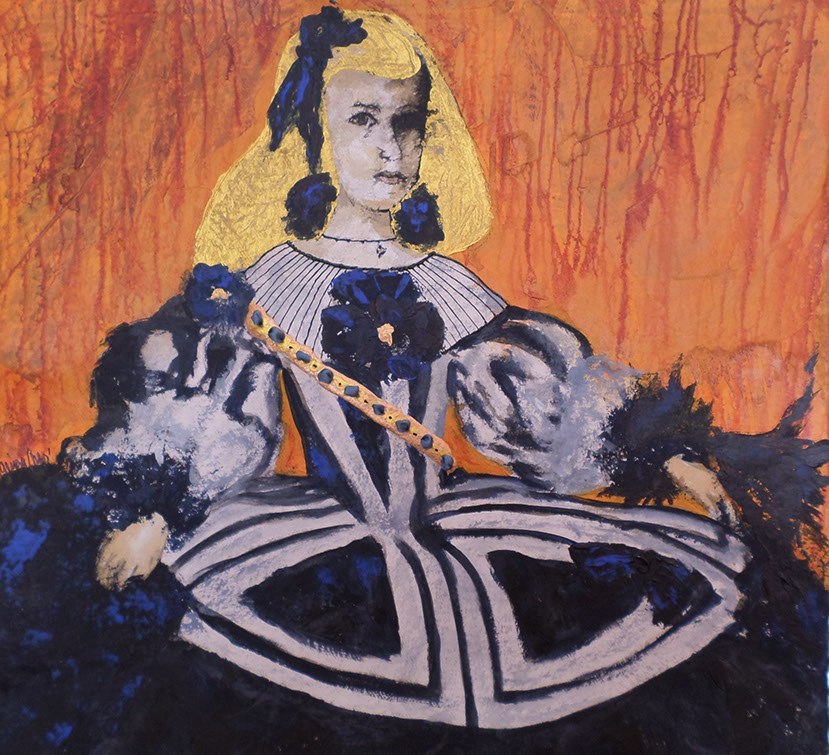
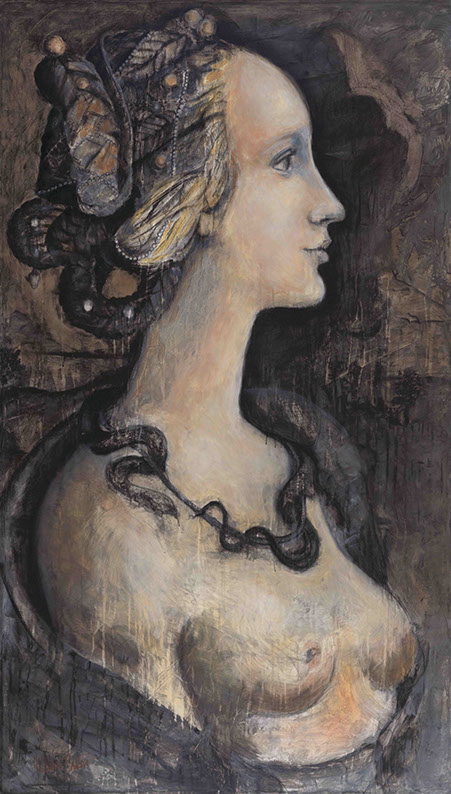
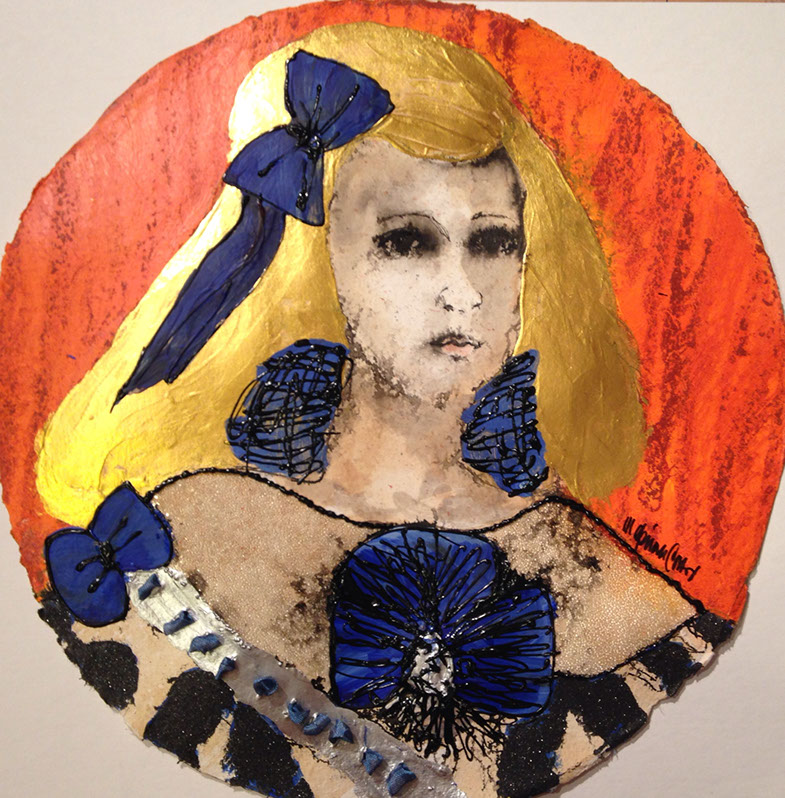
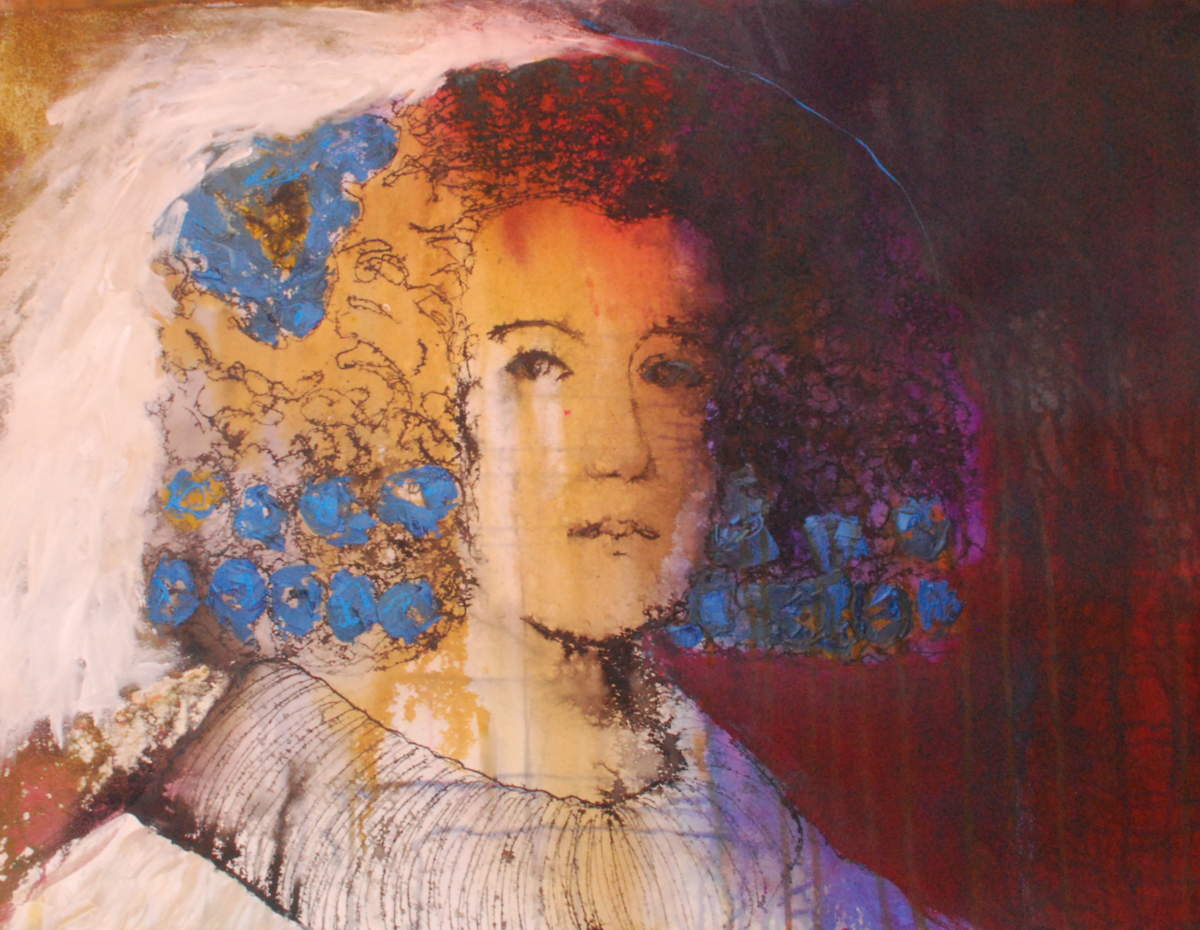
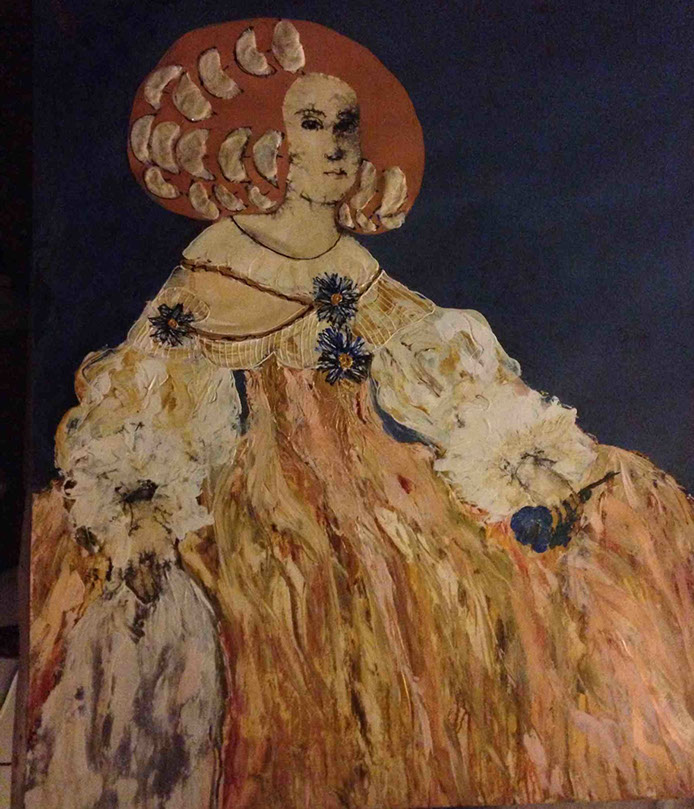

Infanta No.30
Ink, Acrylic on Nujabi Paper
30 in x 28 in
Luxuria
Mixed Media on Canvas
41 in x 72 in
Margarita I
Mixed Media on Nujabi Paper
16 in in Diameter
Maria Teresa Con Olor a Café II, 2013 Ink, Acrylic & Cuban Coffee on
140#Langton Prestige
30 in x 22 in
Riene des Papillons Blancs
Mixed Media on Canson Montval Papers
36 in x 44 in
5 - 5
<
>
MARCELO WONG
Working mostly with steel and stone, the award-winning Peruvian sculptor cites Botero as one of his greatest influences and finds inspiration in everyday life. Wong’s work reflects aspects of the mundane and establishes a sense of immediacy with the spectator. He has participated in a numerous exhibitions worldwide and his sculptures have traveled to Iran, Germany, Brazil, and Argentina as well as many cities in the United States.
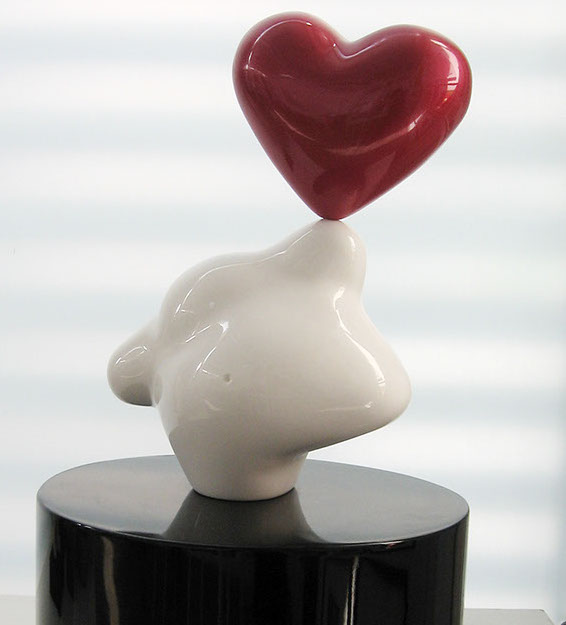
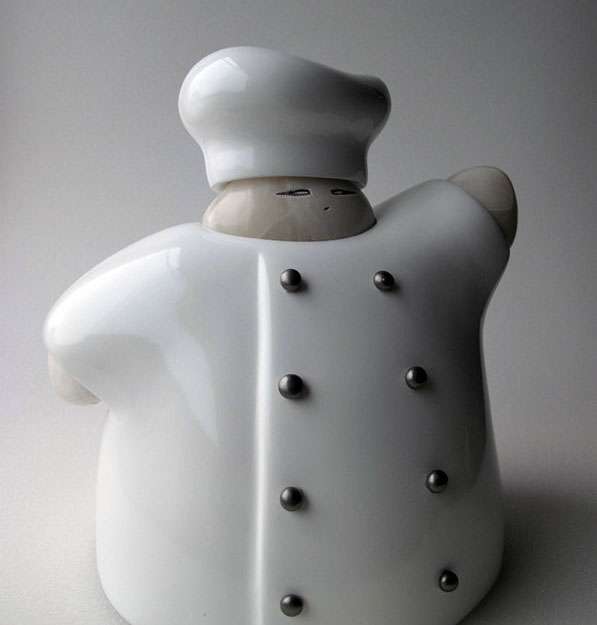
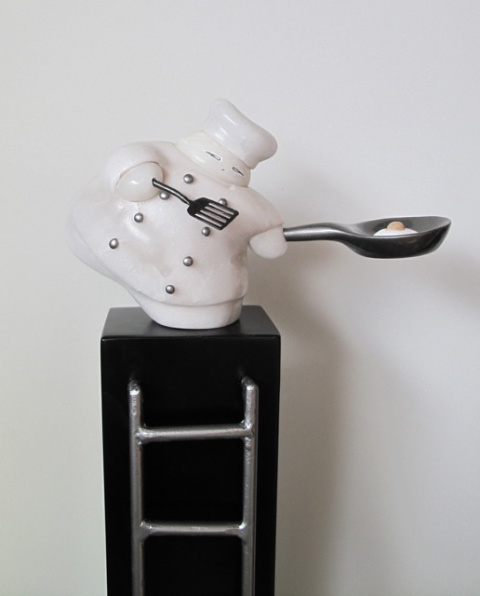
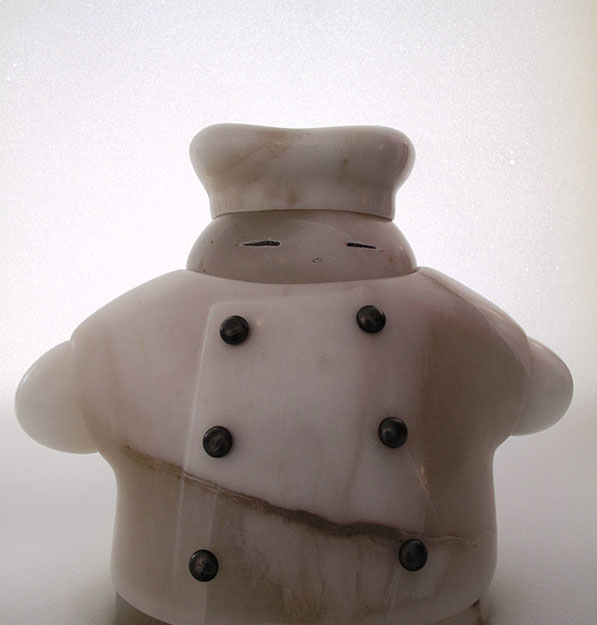
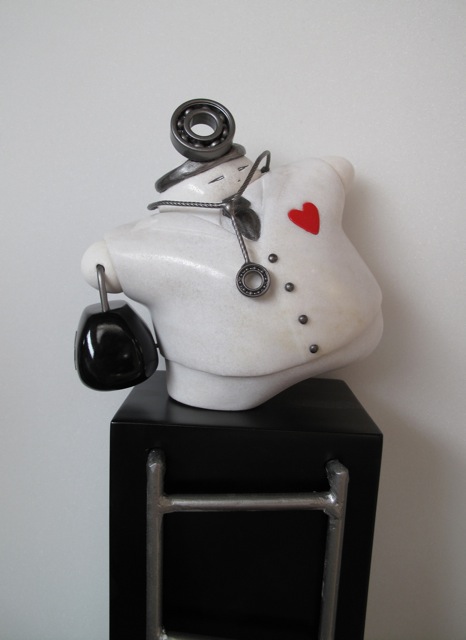
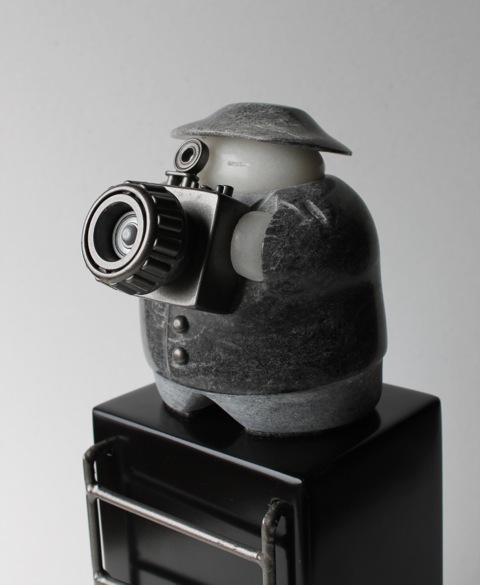
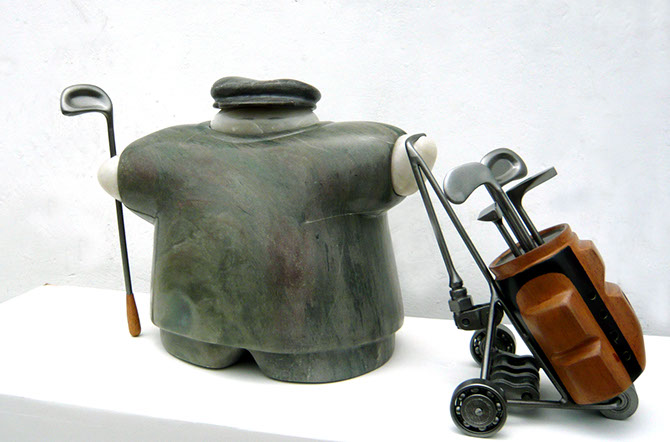
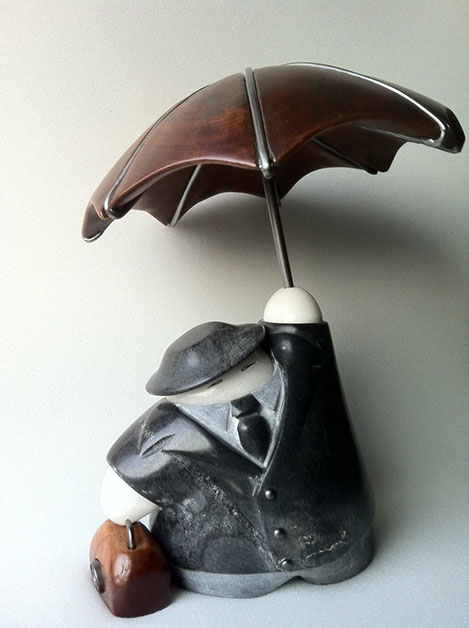
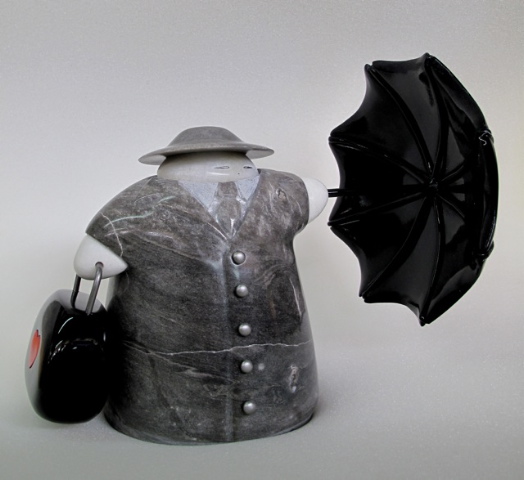

#11 Alabaster
Wood & Resin
Chef Blanco
Alabaster, Resin & Metal
Chef con Huevo
Alaster, Resin & Metal
Chef, 2012
Alabaster & Metal
Doctor
Alabaster, Resin & Metal
Fotografo 1
Alabaster, Resin & Metal
Golfista 3
Alabaster, Wood & Metal
16 in x 10 in x 10 in
Viajero, 2011Alabaster, Wood & Metal
Viajero
Alabaster, Wood & Metal
2 - 9
<
>
MARK GASKIN
"Mark Gaskin belongs to the powerful revival of representation in the visual arts which has been gradually eroding the preeminence of abstraction from years past... The work of Mark Gaskin is welcome proof that painting is and remains a major form of art in the waning days of the twentieth century" - Leo Rossgandler, A.I.C.A., I.C.O.M.
"Gaskin is an accomplished painter and draftsman... young, charged with creative energy and intellect, and (his) work promises to draw us in strange new directions." - Robin Laurence, Arts Writer "I recreate the surface of each new canvas to imitate the surface of a cracked plaster wall - the only working surface available to me when I originally began to draw and paint. Each new painting is a reconstruction - I use varying combinations of plaster, charcoal drawing, layers of acrylic colours, and translucent resin. Through the process the paintings realize their power, their meaning." - Mark Gaskin
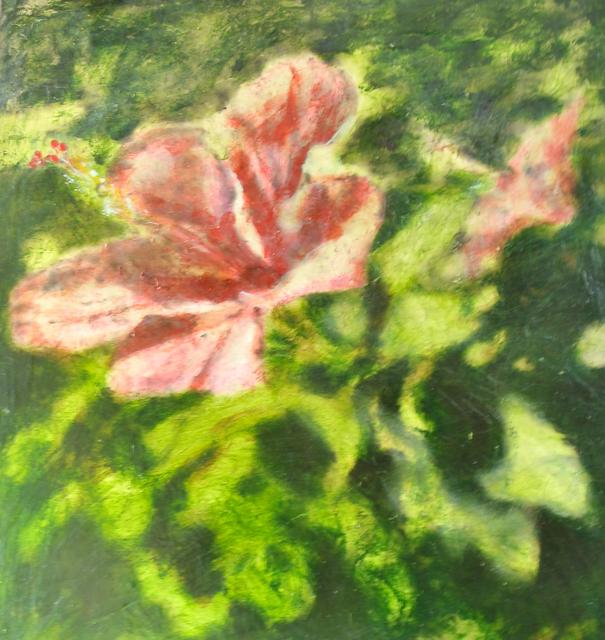
Hibiscus III Triptych
Acrylic on Canvas Encostic
56 in x 50 in
1 - 1
<
>
MARTA MOREU
Born on 6 June 1961 in Barcelona, art has always been at the core of Marta Moreu’s life, sharing her love with her family and a special interest in sculpture with her father. In 1977 she took courses in design and painting and later on took the Fine Arts admittance examination. In 1980 she was accepted at the Fine Arts Faculty of Barcelona. Additionally, due to a strong interest in teaching, she combined her art studies with those of teaching at the Blanquerna Teaching School. In 1983 she obtained the Diploma of General Elementary Education and in 1985 she obtained the Diploma in Fine Arts with a specialization in Sculpture.
Making a sculpture is an act of creation; it is like playing God to create your own world with something as amorphous and earthly as mud. It is enjoyable to create something from nothing. It is through these new beings that I seek my own immortality. This is why I have chosen bronze as my definitive material, because thanks to its nobility and durability it will withstand the passage of time better, and perhaps I will live on for centuries.
All my work has been created naturally, sometimes impulsively, probably surging up from my subconscious. It emerges from my deepest feelings with a sole intention: to communicate. With whom or with what, I do not know. Perhaps with myself. It is like introspection, a psychoanalysis that brings to the surface my fears, my doubts, my past, all my inner world, often unknown and unfamiliar to me.

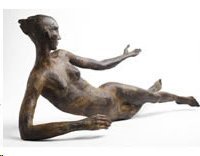
El Oro Del Rhin Grande
Bronze
67 in x 42 in x 30 in
Swimmer
Bronze
36 in x 18 in
2 - 2
<
>
MARTIN JANECKY
Martin Janecky began his career with glass at the age of 13 and later explored sculpting methods in the Czech Republic. By the time he was 20, he was employed by leading artists and designers around the world to assist and to execute specific works. Janecky has served as an instructor, visiting artist, and gaffer at several glass making schools, including The Studio, Penland School of Crafts, and Pilchuck Glass School.
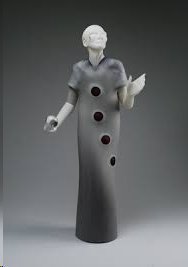
Juggler
Hand Blown-Hot Sculpted Glass
25 in x 12 in x 8 in
1 - 1
<
>
MASSIMO VITALI
Photographer Massimo Vitali, was born in Como, Italy, in 1944. He arrived on the art scene relatively late. After stints as a photojournalist and film cameraman, it was not until the 1990′s that Vitali acquired international renown for his large-scale photographs of Italian beaches and other public spaces showing anonymous people during their leisure time. The images from the Portfolio of Landscapes with Figures No. 31/120 relate to the genre of ‘landscape with figures’ due to their descriptive clarity. Vitali’s works have been interpreted as a contemporary version of landscape paintings, reinterpreted through photography.
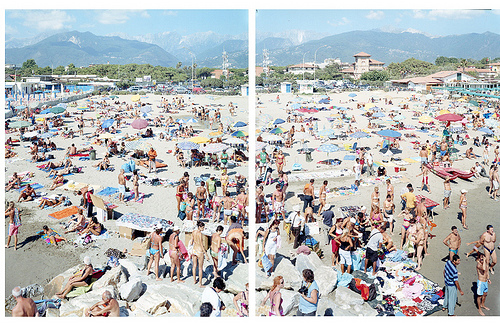
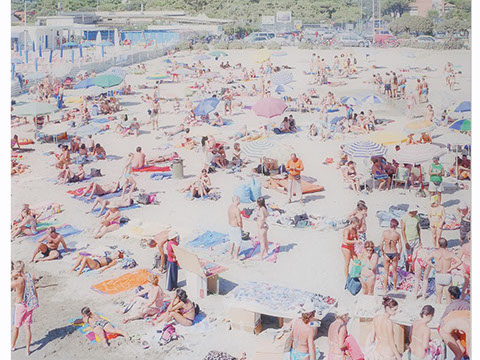

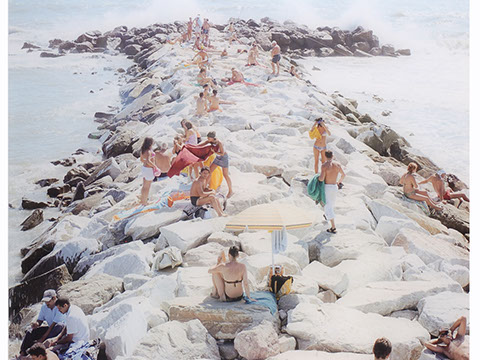
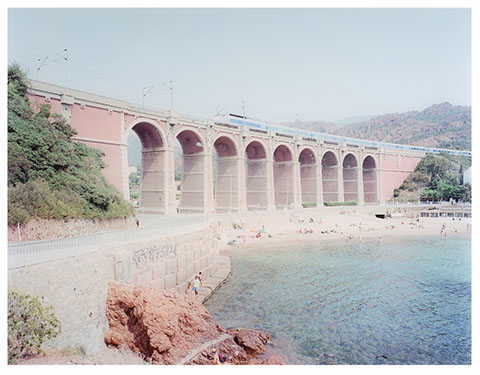
MadiMa Ragnodoro, Diptych
Plexiglassed Photography from
Portfolio No. 31-120
28 in x 36 in
MadiMa Ragnodoro, Diptych, Left Plexiglassed Photography from
Portfolio No. 31-120
28 in x 36 in
MadiMa Ragnodoro, Diptych, Right
Plexiglassed Photography from
Portfolio No. 31-120
28 in x 36 in
MadiMa Wave Verticale
Plexiglassed Photography from
Portfolio No. 31-120
28 in x 36 in
Vitali-Antheor Viaduct
Plexiglassed Photography from
Portfolio No. 31-120
28 in x 36 in
2 - 5
<
>
MEL BOCHNER
Mel Bochner [born 1940] is recognized as one of the leading figures in the development of Conceptual art in New York in the 1960s and 1970s. Emerging at a time when painting was increasingly discussed as outmoded, Bochner became part of a new generation of artists which also included Eva Hesse, Donald Judd, and Robert Smithson - artists who, like Bochner, were looking at ways of breaking with Abstract Expressionism and traditional compositional devices. His pioneering introduction of the use of language in the visual, led Harvard University art historian Benjamin Buchloh to describe his 1966 Working Drawings as ‘probably the first truly conceptual exhibition.'
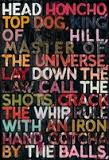
Head Honcho
Monoprint with Collage,
Engraving and Embossement on
Hand-Dyed Twinrocker Handmade Paper
28 in x 19 in
1 - 1
<
>
NELSON LEIRNER
Nelson Leirner was born in 1932 in the city of São Paulo. Between 1947 and 1952 studied textile engineering at the Lowell Technological Institute in Massachusetts, United States. In 1956 he took painting lessons with Juan Ponç, leaving them to seek other ways of stimulating their work beyond painting on canvas. In 1958, he attended for two months the Atelier Abstraction , Samson Flexor. Since then he participated with several art galleries, and in 1961 held, his first solo exhibition. It was selected for the seventh, eighth and ninth editions of the Bienal de São Paulo (Sao Paulo Biennial) (1963, 1965 and 1967). In 1966, with five other artists he formed the Rex Group, a collective that questioned, through exhibitions, actions and debates over art institutionalization. Currently Leirner is in partnership with Absolut Vodka. The project aims to create a reinterpretation of the bottle using the vision that the artist has.
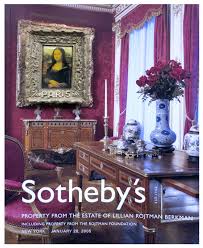
Sotheby's Catalog
Mixed Media
11 in x 19 in
1 - 1
<
>
RENE DE REBECA
Rene de Rebeca is a Mexican born Wood sculptor. “Yo trabajo como escultor en madera, la escultura que yo manejo es un proceso. En donde empiezo a ver la madera, jamás voy a un lugar y devasto un árbol, simplemente lo recogemos, lo compramos, vemos las cualidades de la madera; sí es un ahuehuete, un sabino un nogal o alguna madera importante e inclusive como el Patol que a muchos no les agrada porque es muy ligero” dijo el Escultor Rene Parra.
Al cuestionarle sobre el Proceso nos dijo, el escultor Rene Parra: “Yo lo llevo a mi taller, hago bocetos plantillas, procuro que la obra tenga algo de genialidad y mi espíritu se derrama ahí y cuando la gente ve la obra que tiene una corriente espiritual muy bella, la ve y dice me agrada y nos comunicamos sin hablar, simplemente viendo la pieza”
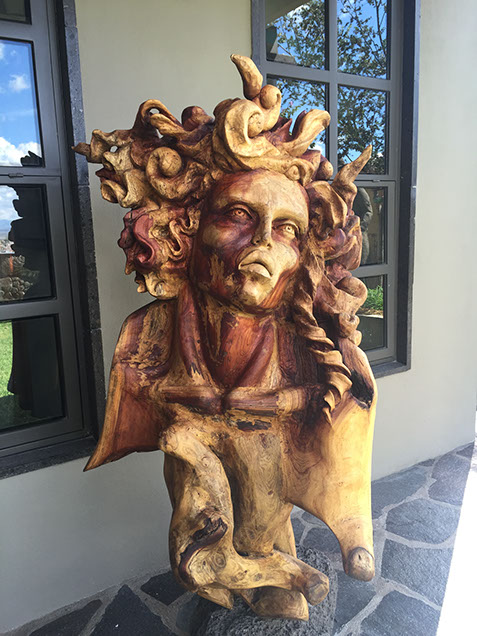
La Mirada
Red Walnut & Volcanic Rock Base
71 in x 28 in x 32 in
1 - 1
<
>
SERENA ROSENFELD
The daughter of two artists, Serena Rosenfeld did not begin painting with any serious intent until she was thirty and living in San Juan, Puerto Rico. To this day, there is a heightened color, a dramatic flair in her larger-than-life figures that are reminiscent of Latin American art. They seem to be part of an ongoing, open-ended story. The viewer is asked to participate in that story. Serena says her paintings are about relationships…”my own, those of my friends”. I look at where we’ve been, where we are, where we’re going…” Given this recurring sense of narrative, it’s not surprising that Serena’s paintings have found their way into the collections of many film making luminaries.

Dancers, Diptych
Oil on Canvas
36 in x 60 in each
1 - 1
<
>
SPENCER TUNICK
Spencer Tunick stages scenes in which the battle of nature against culture is played out against various backdrops, from civic center to desert sandstorm, man and woman are returned to a preindustrial, pre-everything state of existence. Tunick has traveled the globe to create these still and video images of multiple nude figures in public settings. Organizing groups from a handful of participants to tens of thousands, all volunteers, is often logistically daunting; the subsequent images transcend ordinary categories and meld sculpture and performance in a new genre.
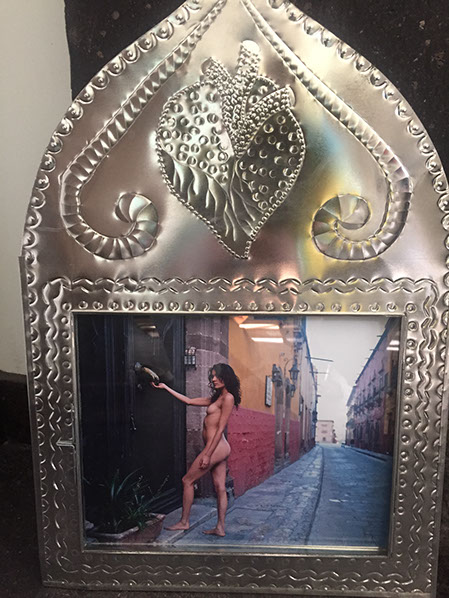
San Miguel De Allende Series, 2015
1 - 1
<
>
SVETLANA OSTAPOVICI
Svetlana Ostapovici was born in Ribnita, Republic of Moldova, in 1967. In 1999 she moved to Italy and immediately she is attracted by any artistic expression which is in the peninsula, mainly she is spellbound by the Greek and Latin culture, by the historical stories, the ruins, the ancient artisan techniques, the monuments.
In Pompei she broadens her knowledge of the mosaic, and she studies the technique in Ravenna, and in Rome. She improves herself working in a well-known art studio on Piazza San Pietro.
Then the artistic path is born from a personal elaboration of the mosaic by the linguistic point of view, while the contents are focused and developed on a research of introspective matrix, on the identification problems and on the why we exist.
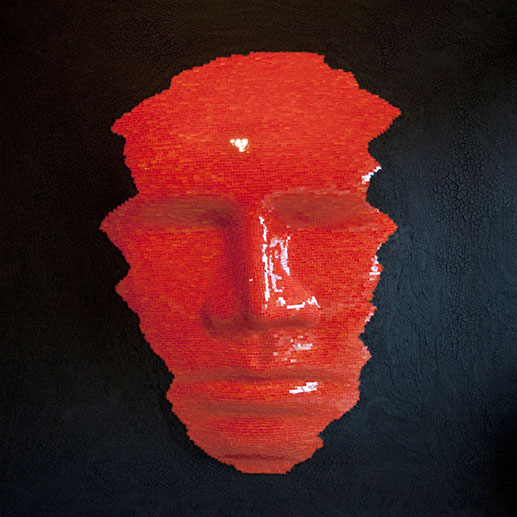
Simbiosa No 4
Colored Glass Mosaic
Mounted on a Synthetic Textured Surround
63 in x 63 in
1 - 1
<
>
TONY BERLANT
Tony Berlant (born 1941) is an American artist who was born in New York City. He attended the University of California, Los Angeles, where he received a BA (1961) and MA (1962) in painting
and an MFA (1963) in sculpture. He has a large collection of Southwestern Native American art, especially Mimbres pottery and Navajo rugs.[1] He lives and works in Santa Monica, California.
Berlant became known for his collages of found metal objects. More recently, he has used tin of
his own manufacture, gaining control over the color.[2] The Art Institute of Chicago, the Hirshhorn Museum and Sculpture Garden (Washington, D.C.), the Honolulu Museum of Art, the Iris & B. Gerald Cantor Center for Visual Arts (Stanford, California), the Long Beach Museum of Art (Long Beach, California, the Los Angeles County Museum of Art, the Minneapolis Institute of Art, the Museum of Contemporary Art, Los Angeles, the Museum of Contemporary Art San Diego, the Oakland Museum of California (Oakland, California), the Orange County Museum of Art (Newport Beach, California), the Palm Springs Art Museum (Palm Springs, California), the Philadelphia Museum of Art, the San Francisco Museum of Modern Art, the Sheldon Museum of Art (Lincoln, Nebraska), the Whitney Museum of American Art (New York City), and the Wichita Art Museum (Wichita, Kansas) are among the public collections holding work by Tony Berlant.
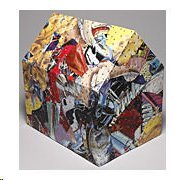
Low Mileage Blonde
Metal, Plywood and Steel
11 in x 18 in x 11 in
1 - 1
<
>
VICTOR MATTHEWS
Victor Matthews is a studio painter whose work is heavily influenced by street art; he worked with artists such as Keith Haring, Jean-Michel Basquiat, and Francesco Clemente in the 1980s. Matthews is best known for abstract cityscapes marked by white geometric motifs. In his paintings produced in New York City, Matthews favors taupe backgrounds with abstract representations of bricks, water towers, and pigeons. His Los Angeles-based works feature sunset-inspired gradient backgrounds and are reminiscent of paintings by Ed Ruscha. These compositions include organic, foliage-like shapes to reflect the lush environment. Regardless of style or location, Matthews highlights bustling urban environments that appear intimate and serene. The artist recently began working with pastels in his “Vortex” series, which features swirling rainbows of color.
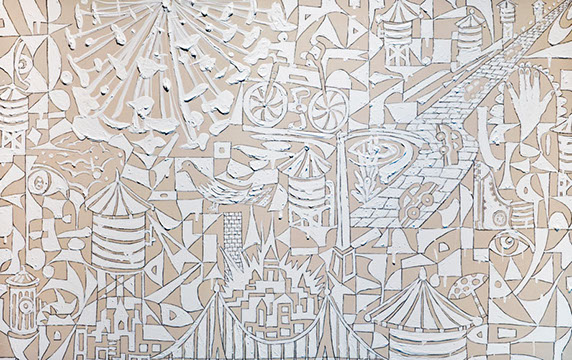
A Snowflake Thursday In NY
Acrylic and Wax Pencil on Canvas
90 in x 32 in
1 - 1
<
>
VIK MUNIZ
Vik Muniz was born in 1961, in São Paulo, Brazil. Initially a sculptor, Muniz grew interested with the photographic representations of his work, eventually focusing completely on photography. Primarily working in series, Muniz incorporates the use of quotidian objects such as diamonds, sugar, thread, chocolate syrup and garbage in his practice to create bold, ironic and often deceiving imagery, gleaned from the pages of pop culture and art history. His work has been met with both commercial success and critical acclaim, and has been exhibited worldwide. His solo show at MAM in Rio de Janeiro was second only to Picasso in attendance records.
In 2010, Muniz was featured in the documentary film Waste Land, directed by Lucy Walker, which featured Muniz's work on one of the world's largest garbage dumps, Jardim Gramacho, on the outskirts of Rio de Janeiro. The film was nominated to the Academy Award for Best Documentary Feature at the 83rd Academy Awar
%2c%2039%20x%2032%20inches%2c%20impression%20couleur%20sur%20ilfoflex.jpg)
Dracula (Caviar Montsters)
Impression, Couleur Sur Ilfoflex
39 in x 32 in
1 - 1
<
>
VULKER KUHN
True to his motto‚ “Just do it!’, Volker Kühn has been making three-dimensional objects: Showcases displaying the miniature worlds of little figures whose interactions tell short stories of good times and bad times in people’s lives. This “art in boxes” comes in small stages like snapshots which provoke amusement and laughter. Thematically, they are inexhaustible. The artist caringly and ironically unmasks stereotypes, and he turns the spotlight on those personal deficiencies which all of us perceive in ourselves and in our fellow men. With a wink and in a very conciliatory way he creates an emotional distance towards our own weaknesses, loves, joys, and striving for success. All his art objects involve the images of human beings, animals and “animate” things, often showing absurdly exaggerated proportions and juxtapositions.
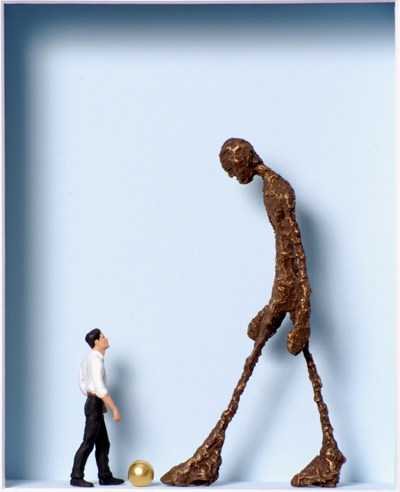
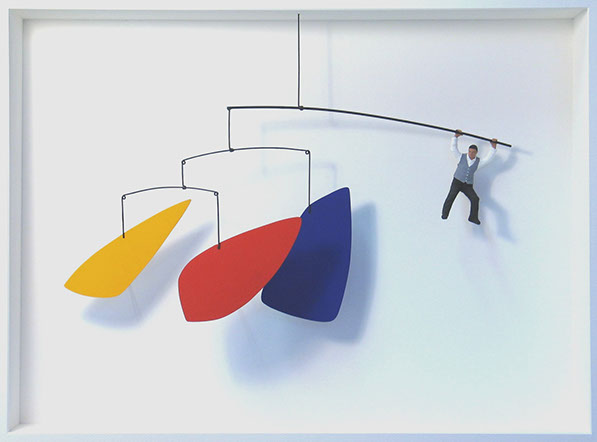

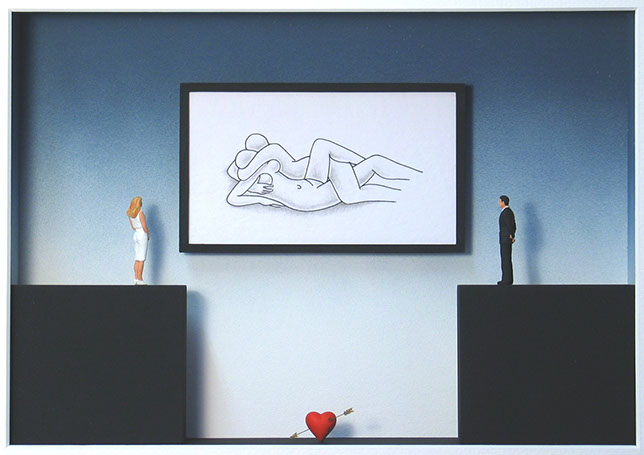
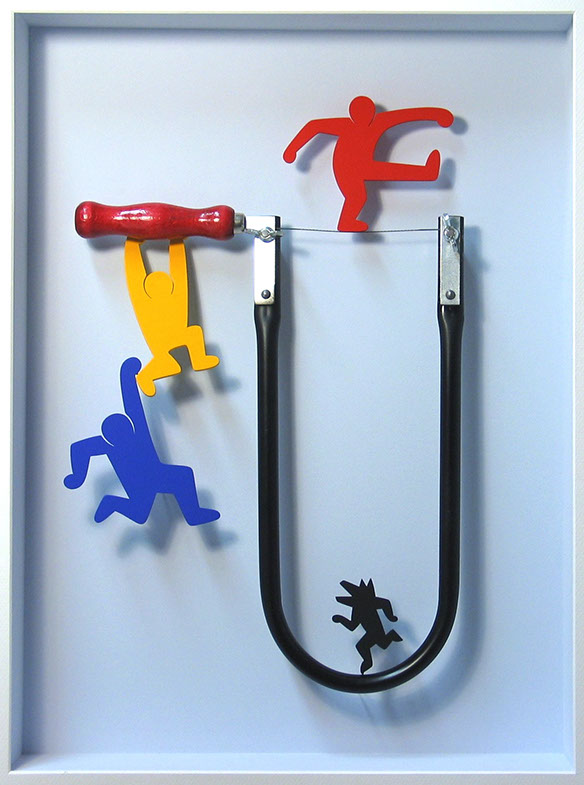
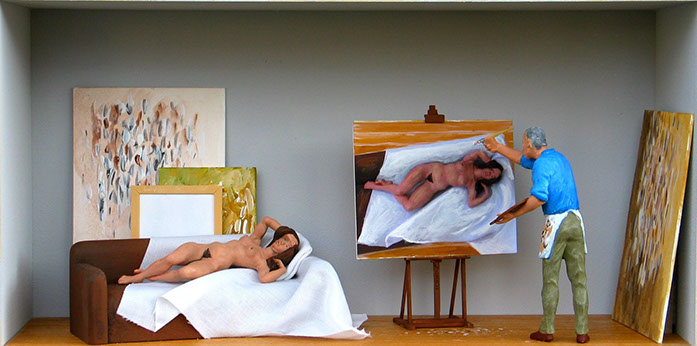

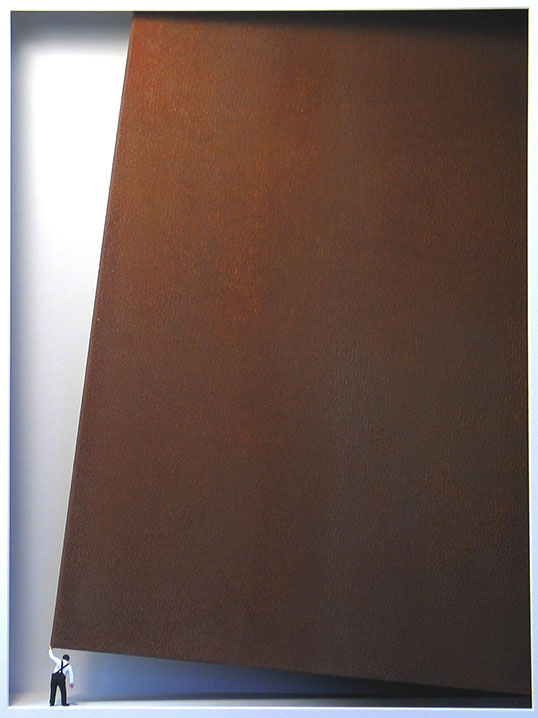

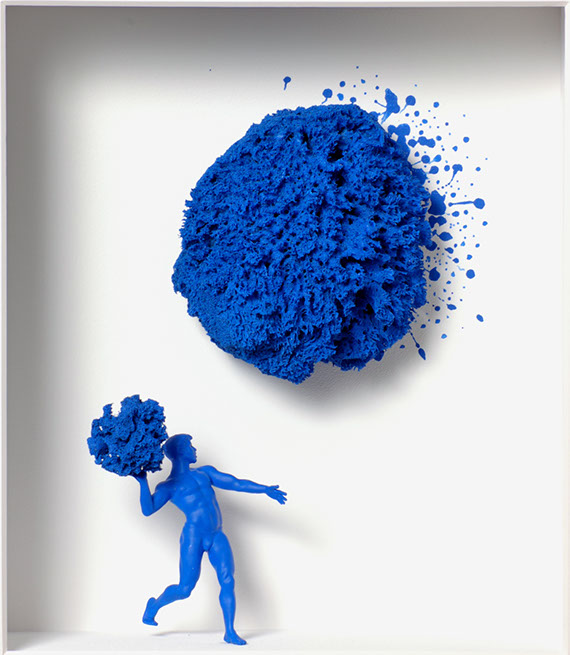

Homage to Alberto Giacometti
Mixed Media
20 in x 17 in
Homage to Calder
Mixed Media
27 in x 31 in
Homage to Damien Hirst
Mixed Media
22 in x 21 in
Homage to Henri Matisse
Mixed Media
20 in x 22 in
Homage to Keith Haring
Mixed Media
31 in x 37 in
Homage to Lucian Freud
Mixed Media
20 in x 24 in
Homage to Piet Mondrian
Mixed Media
22 in x 21 in
Homage to Richard Serra
Mixed Media
37 in x 29 in
Homage to Sam Francis
Mixed Media
31 in x 27 in
Homage to Yves Klein
Mixed Media
22 in x 20 in
10 - 10
<
>

Designed by: Copyright ©